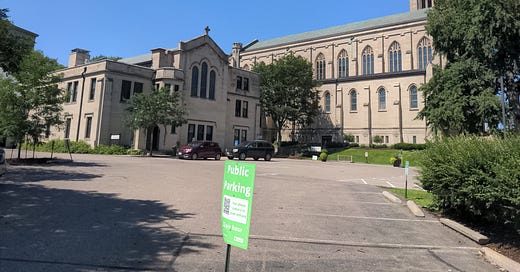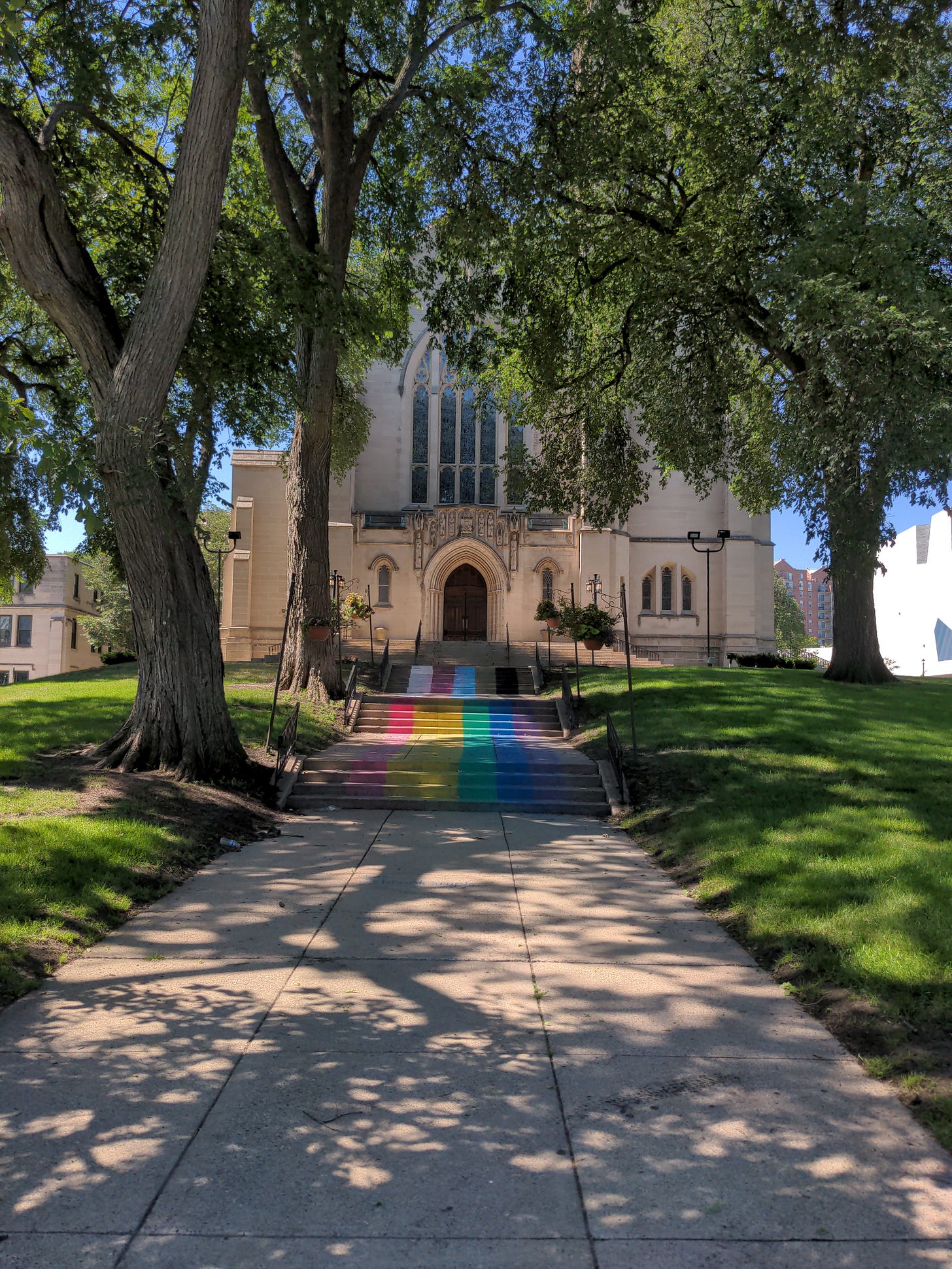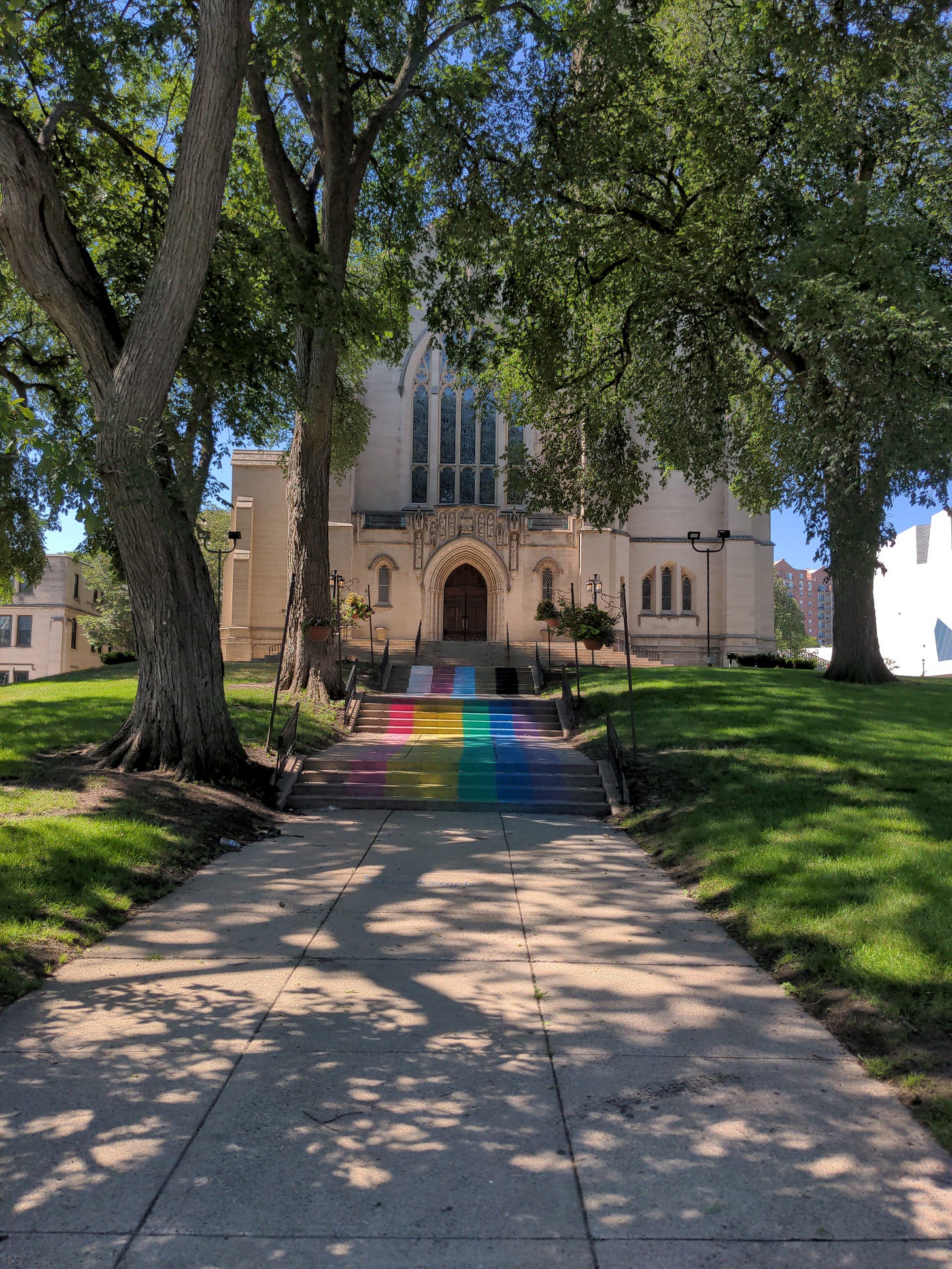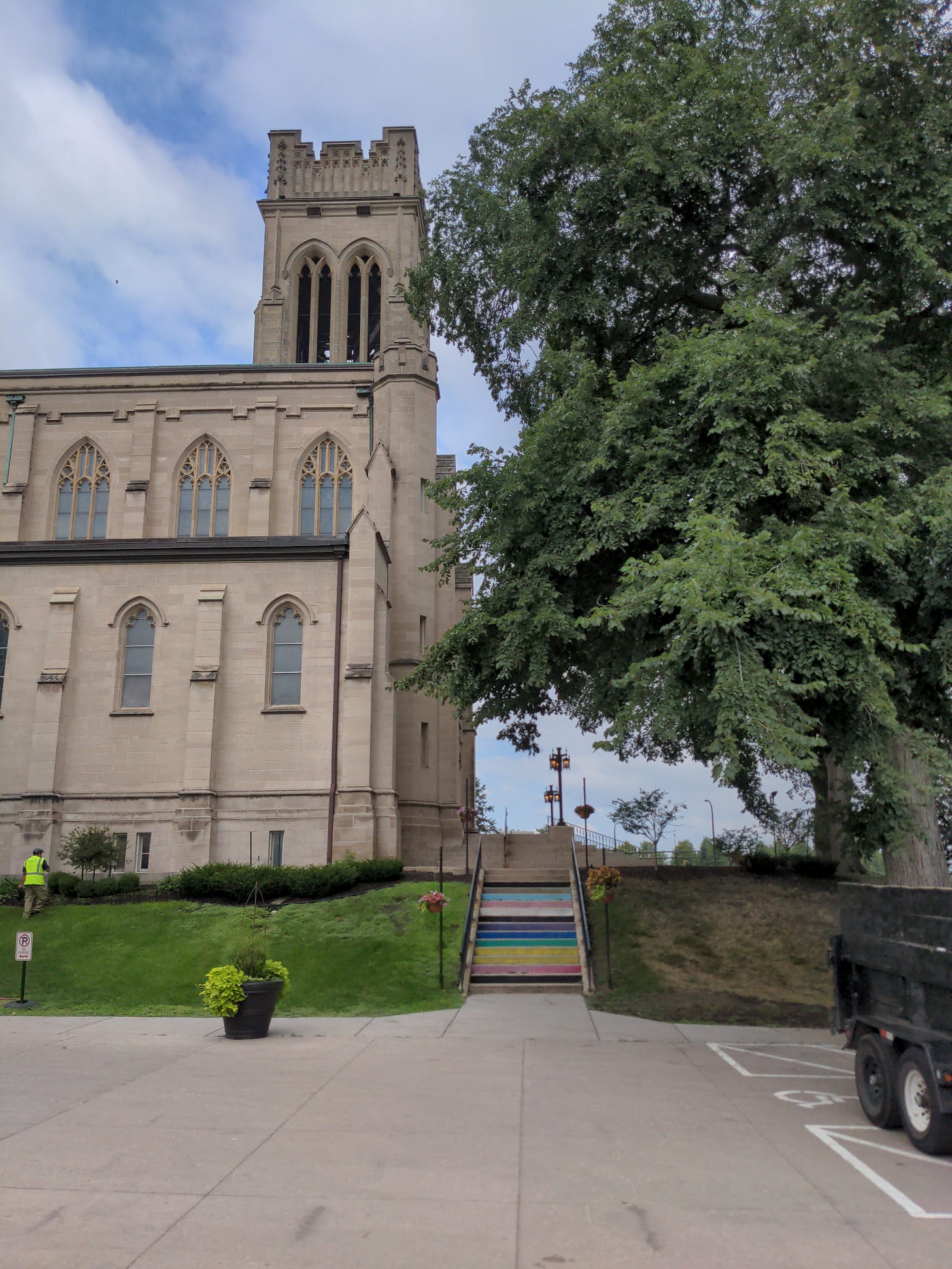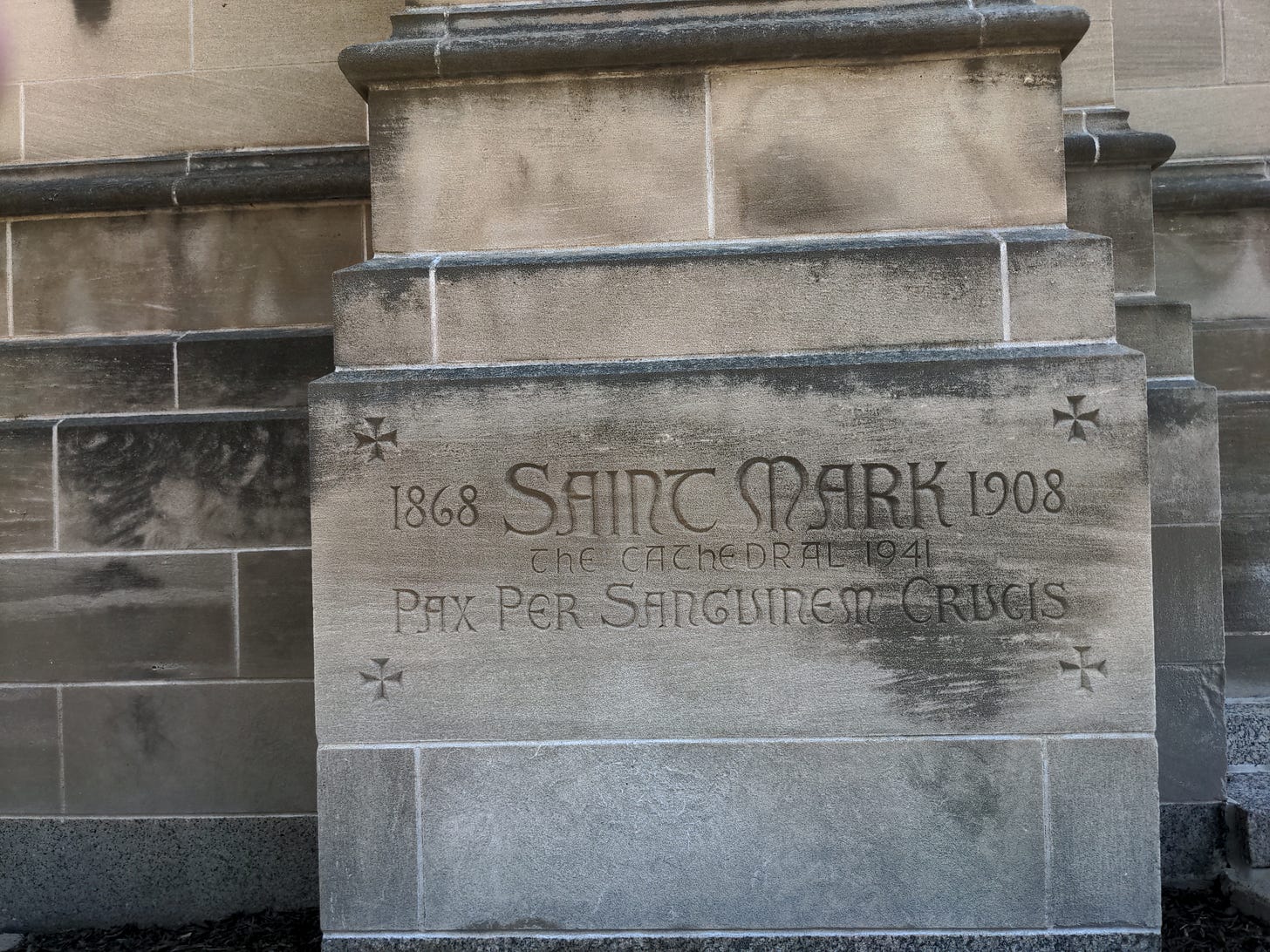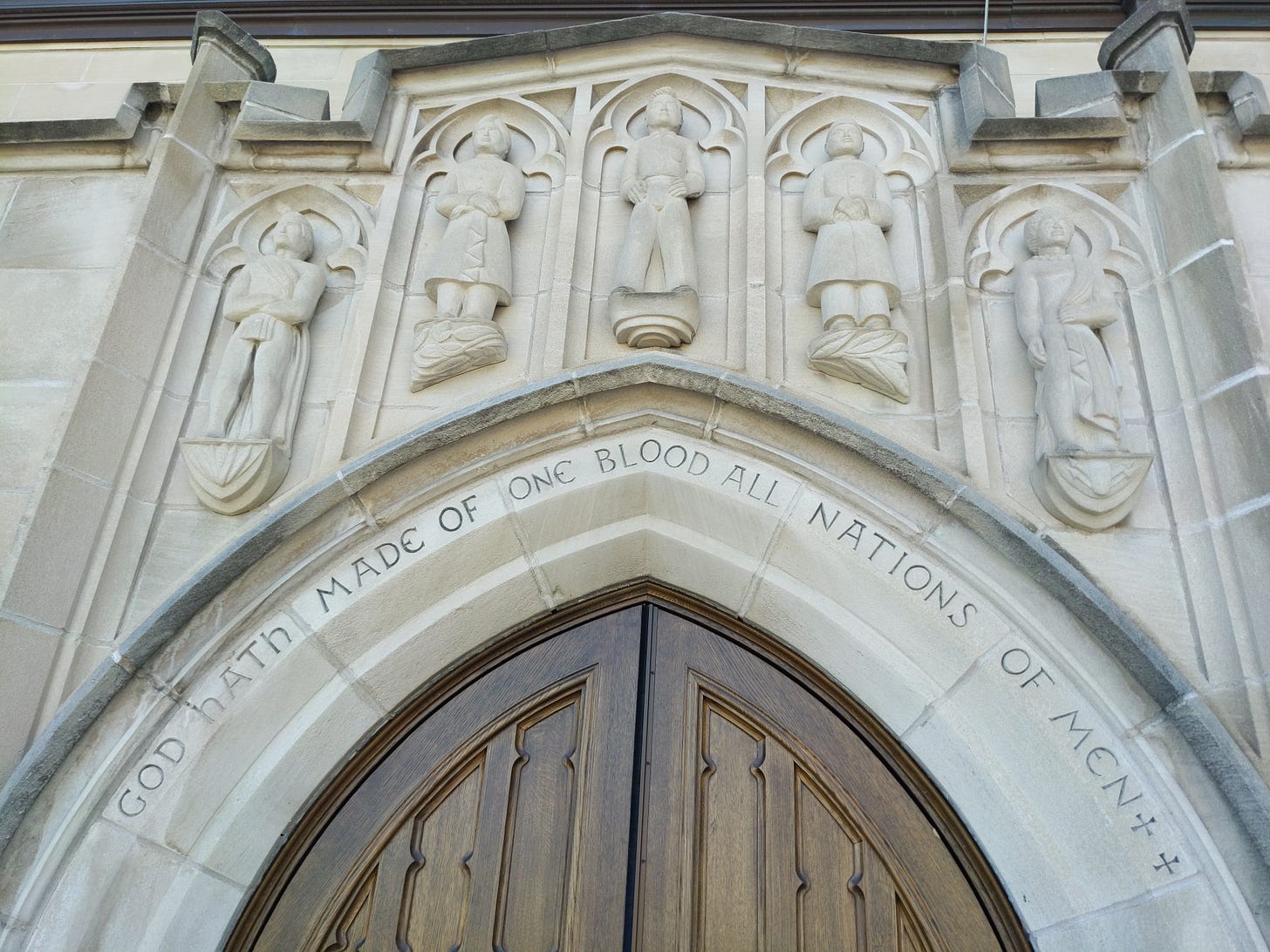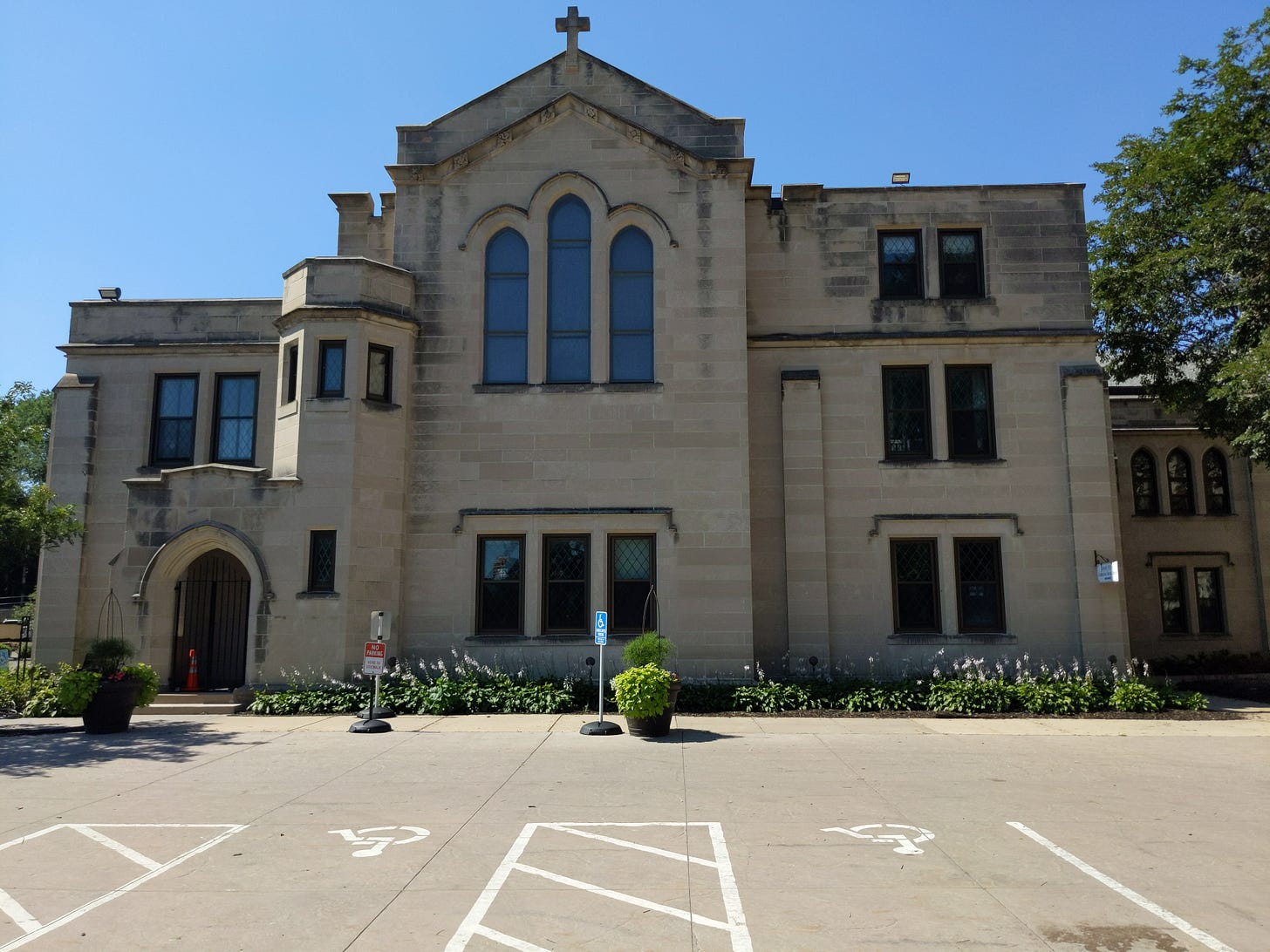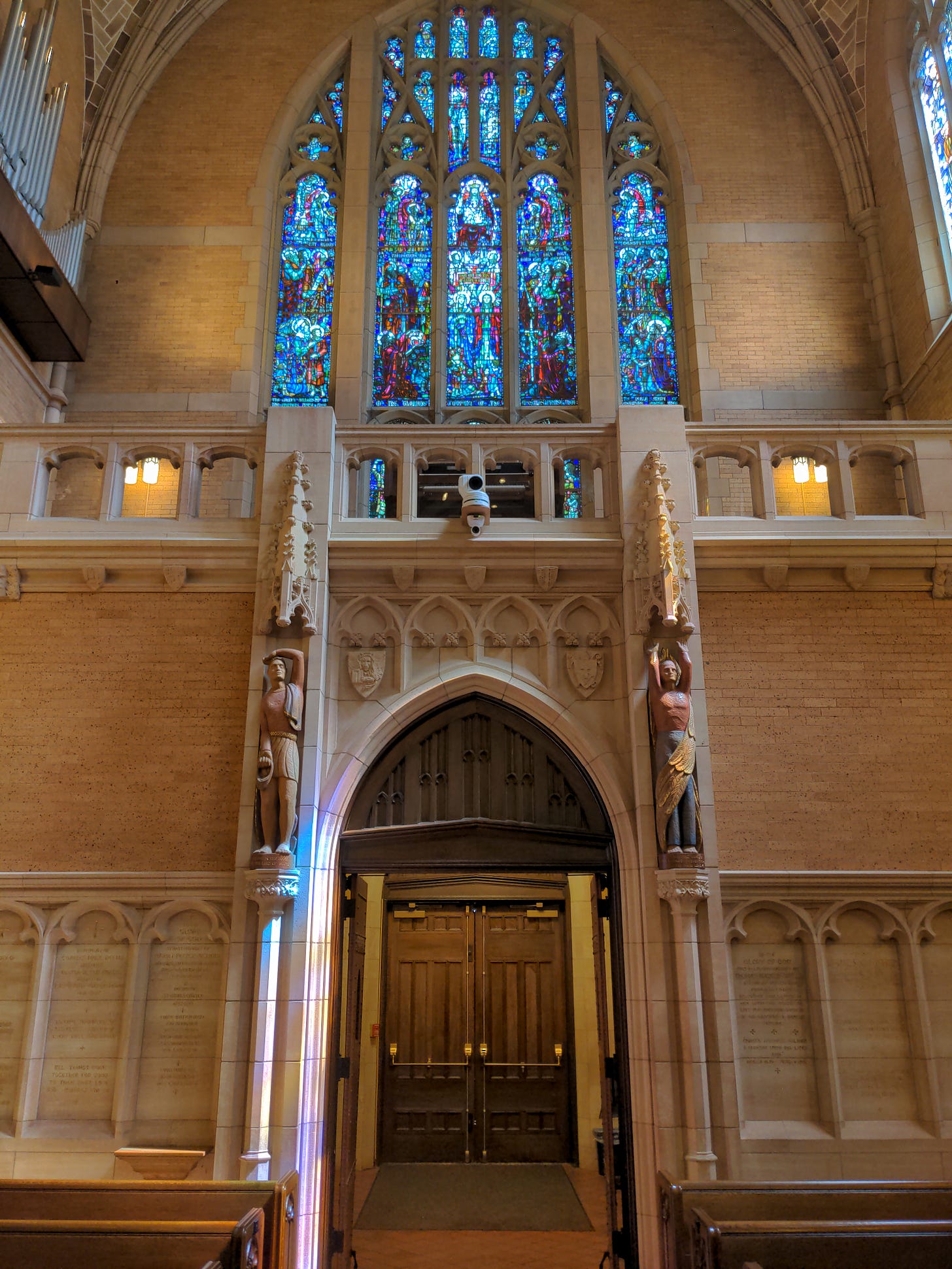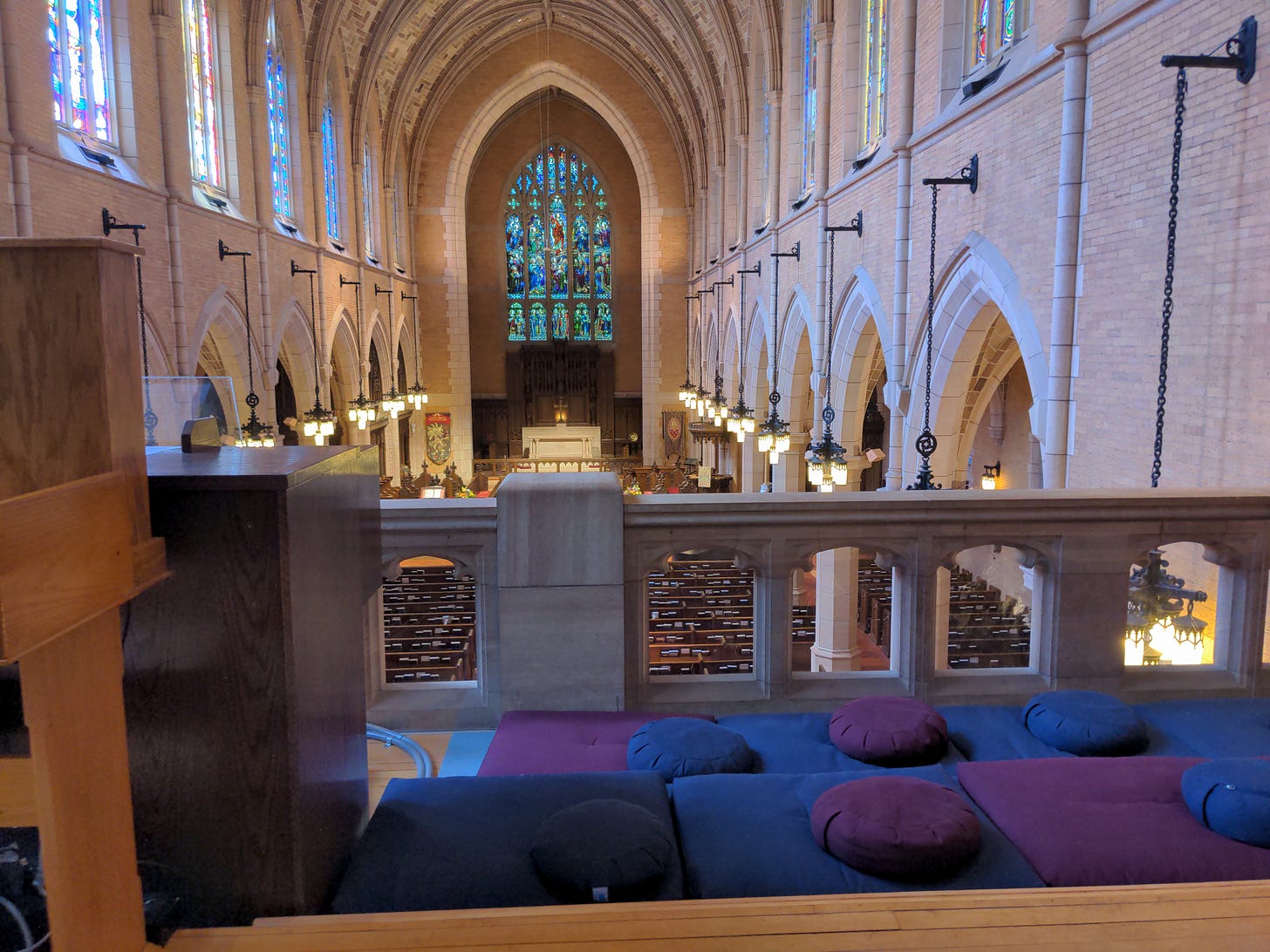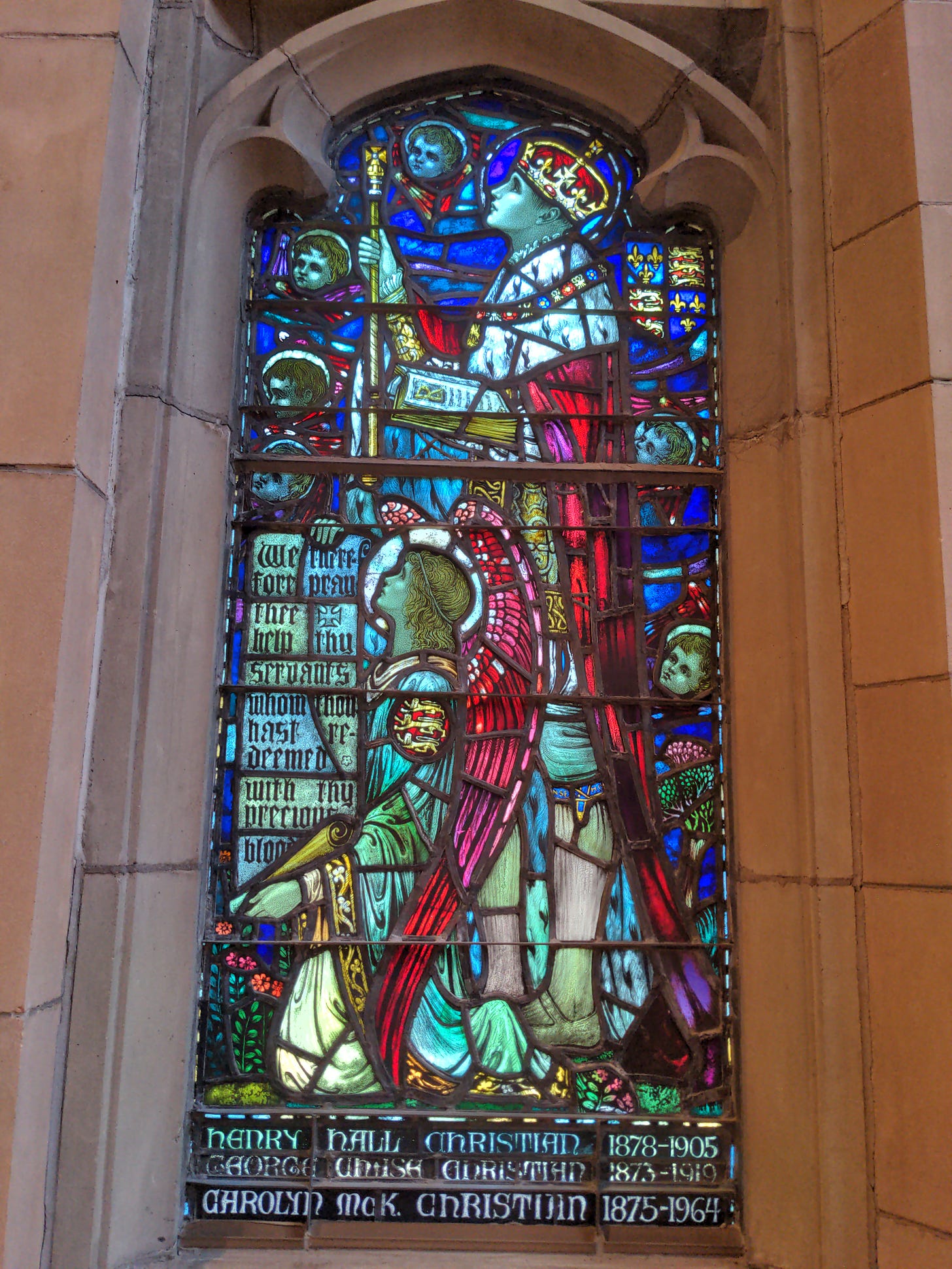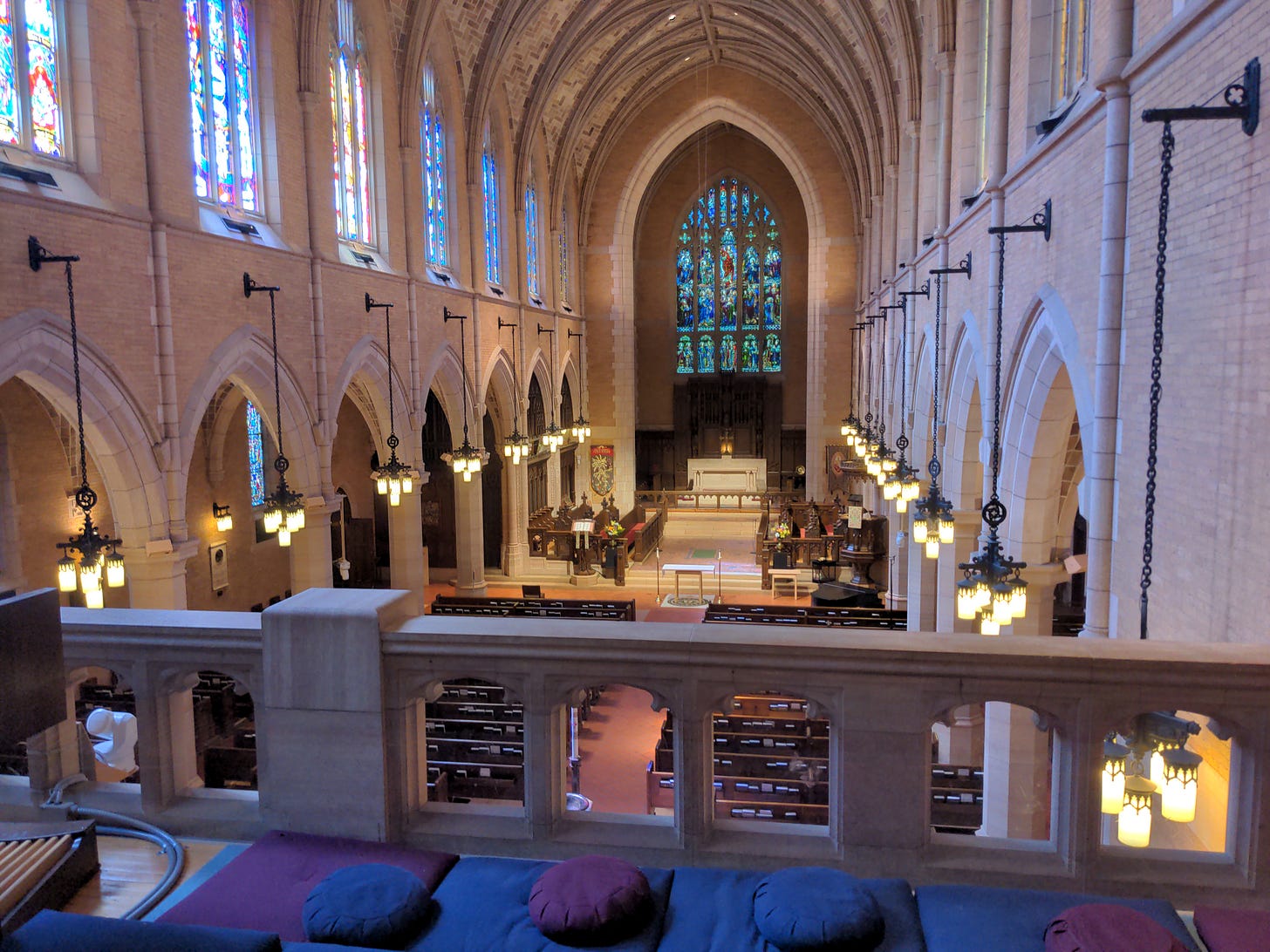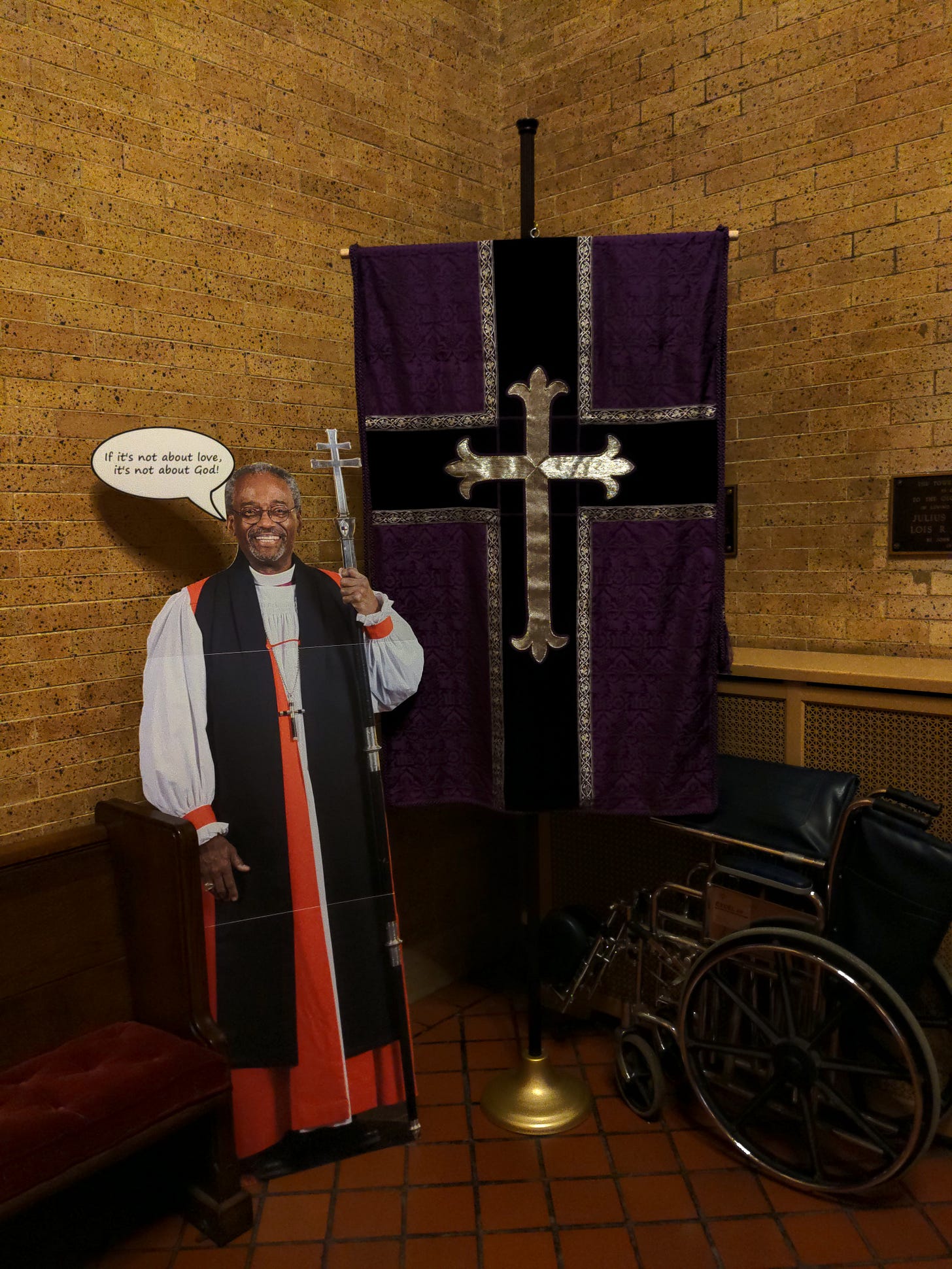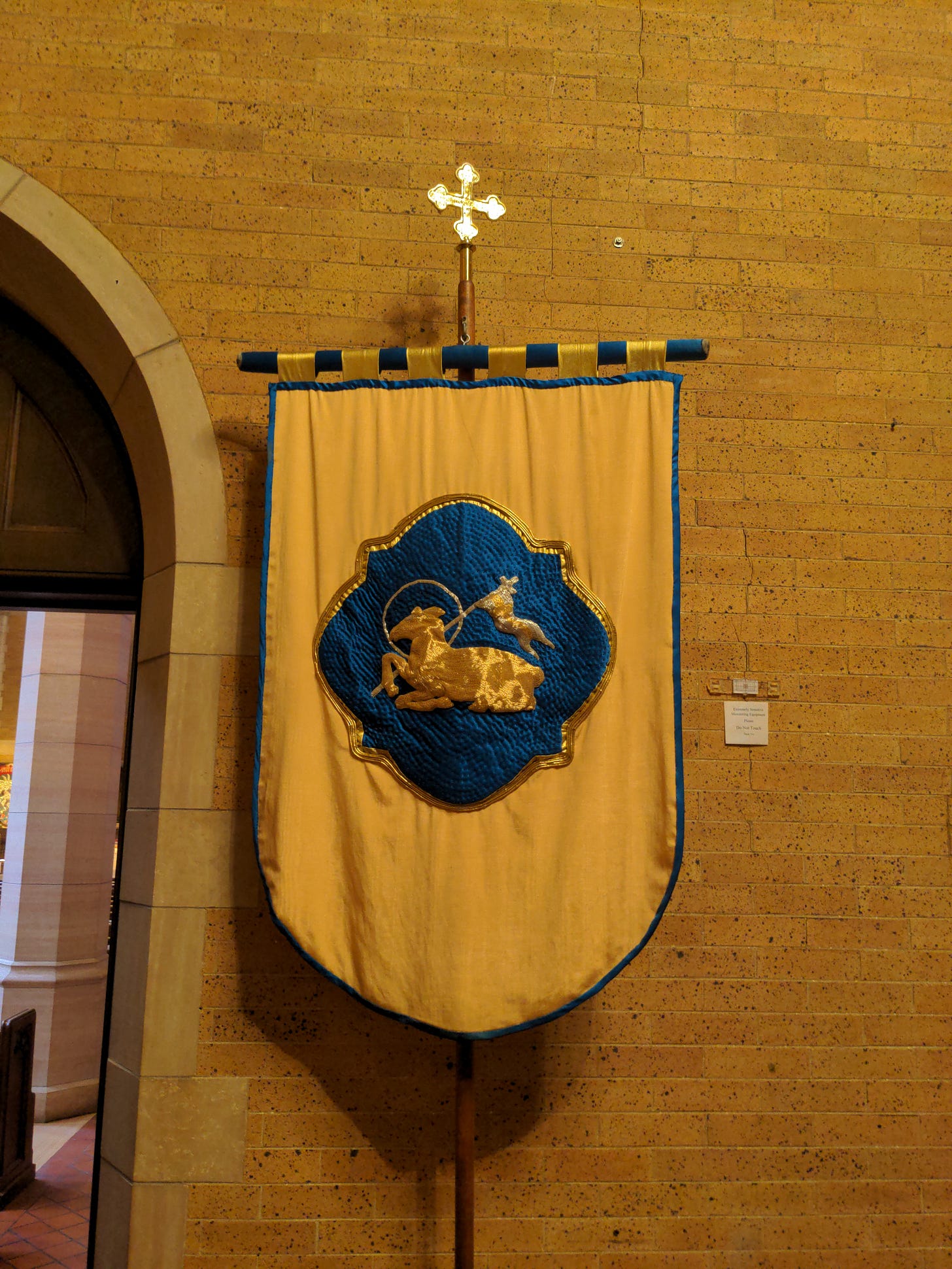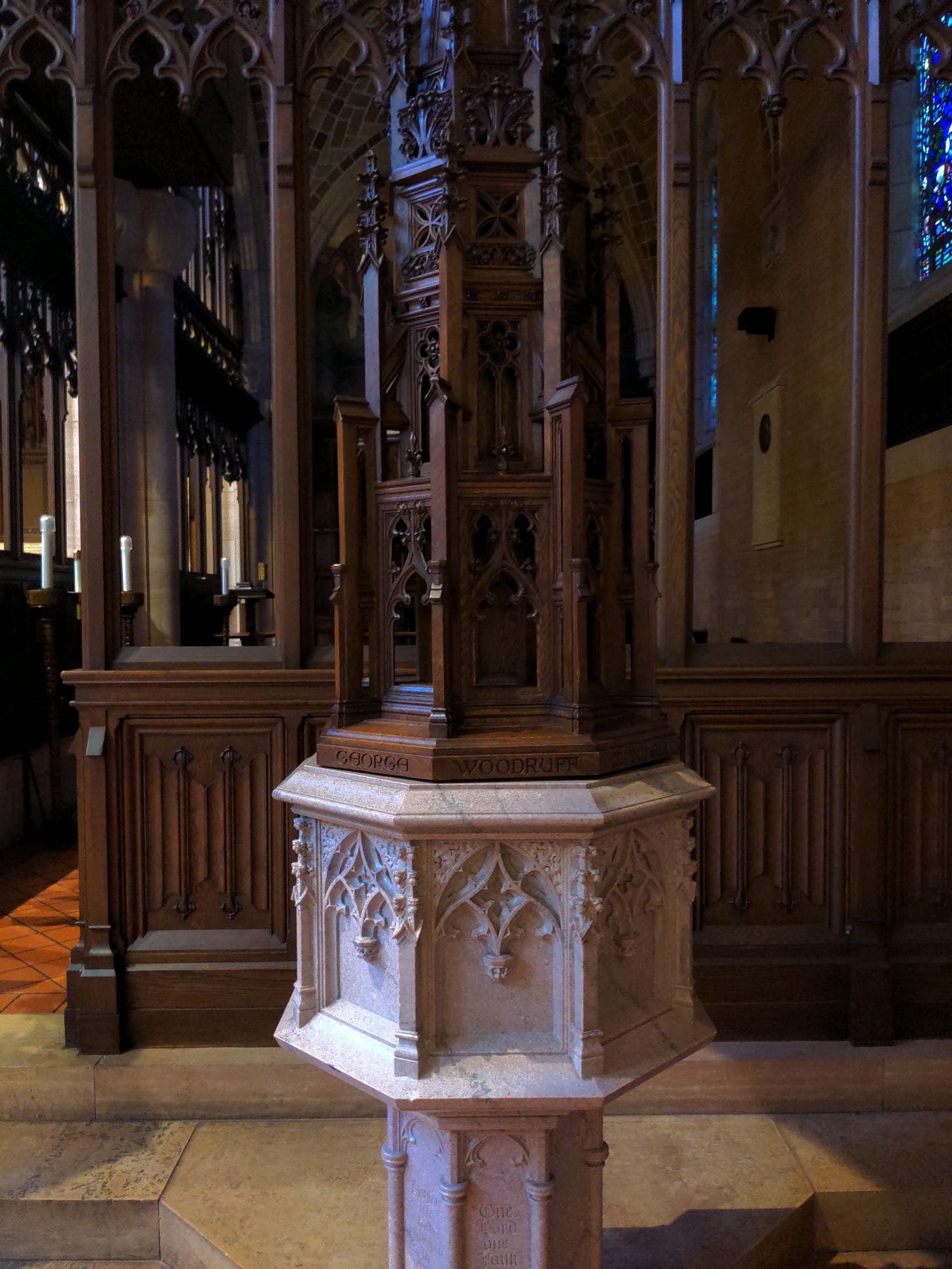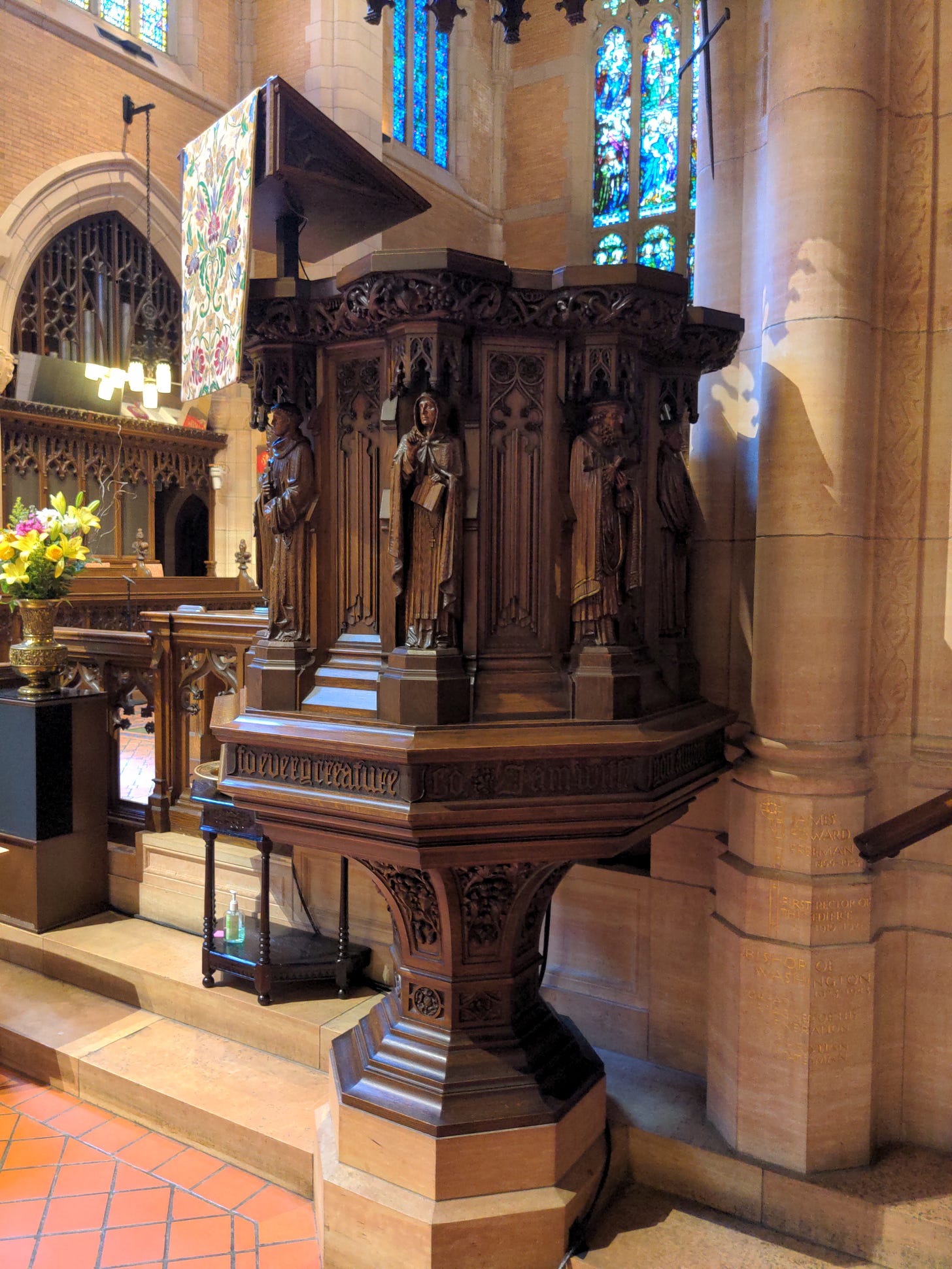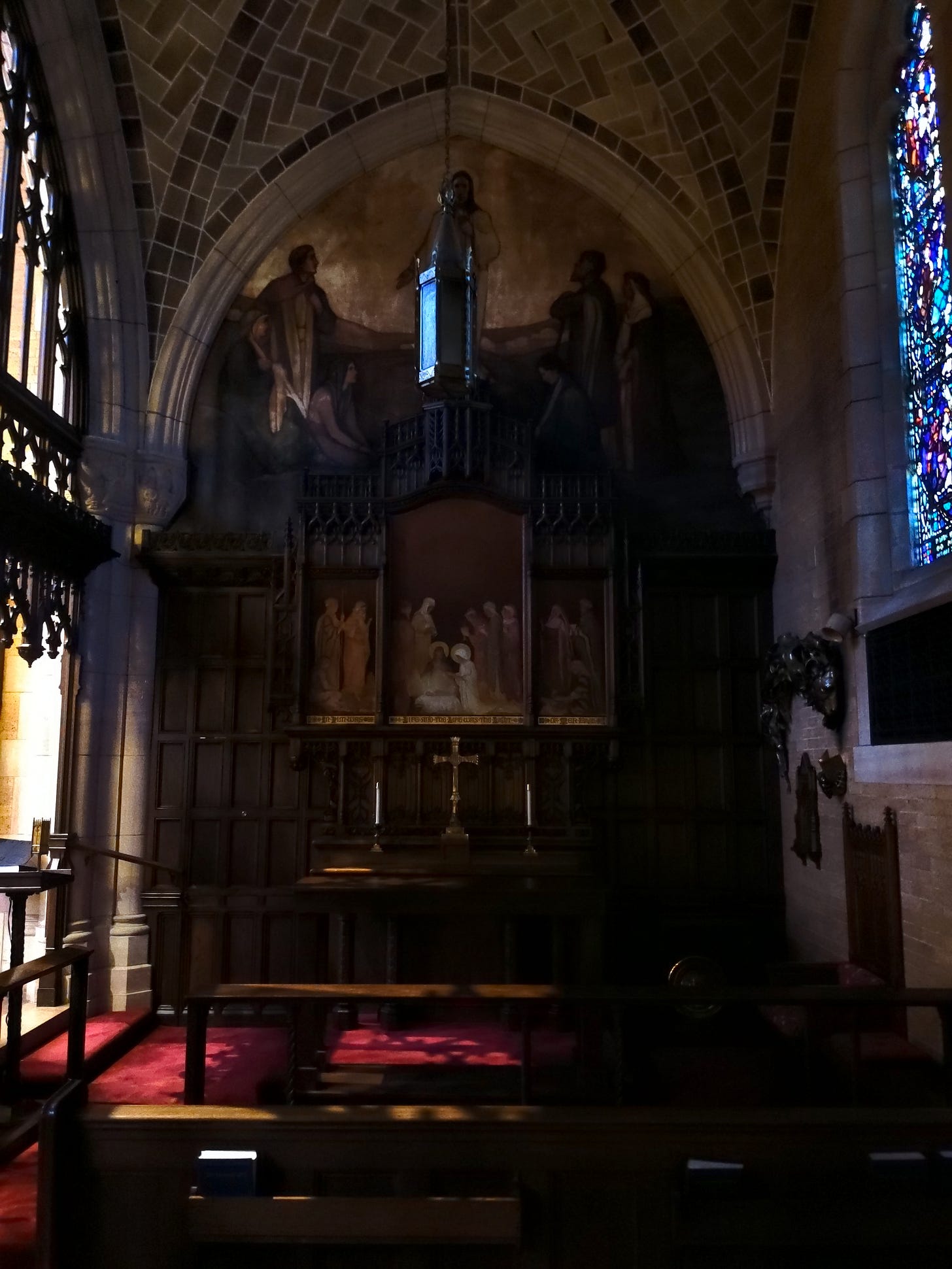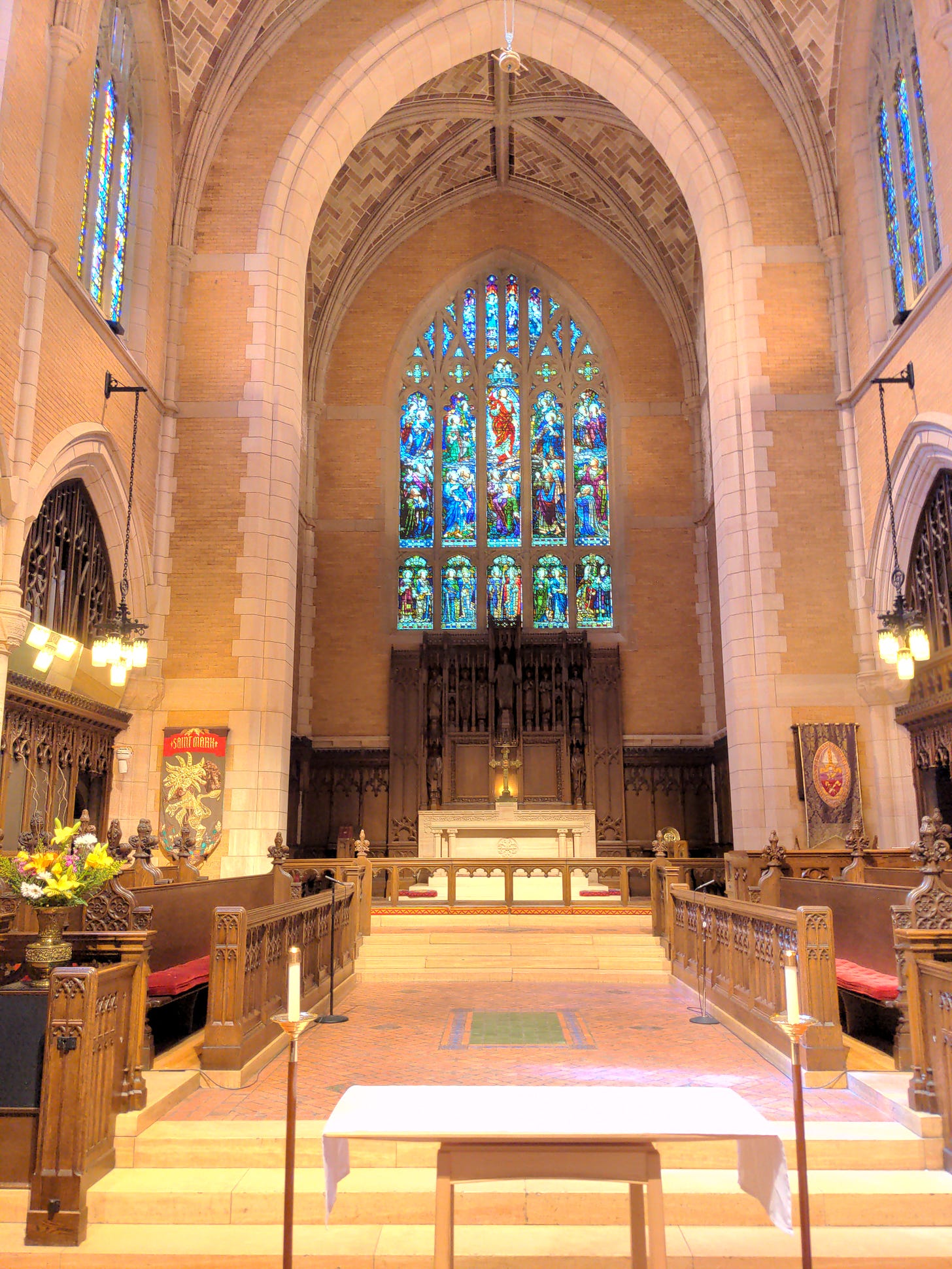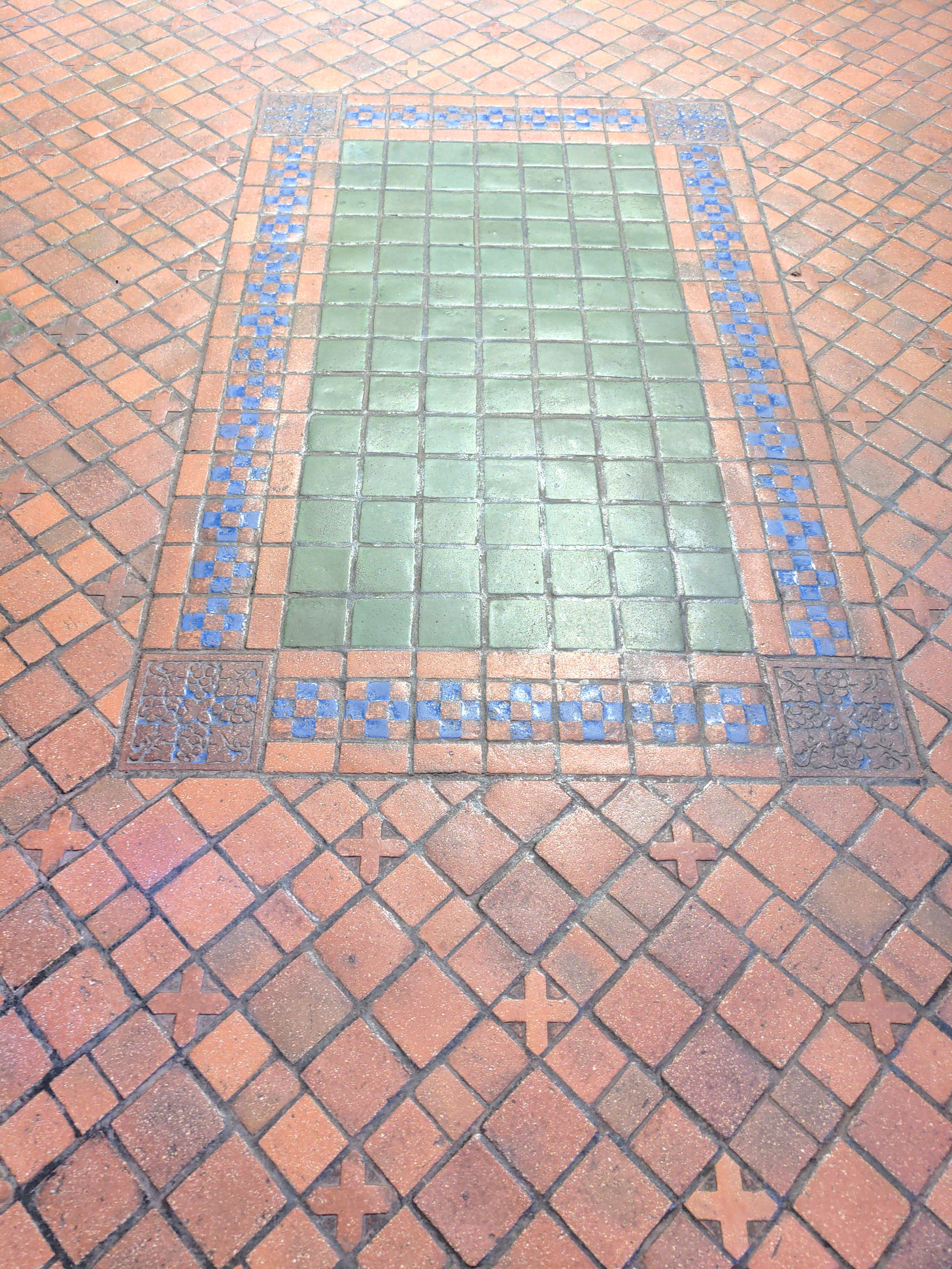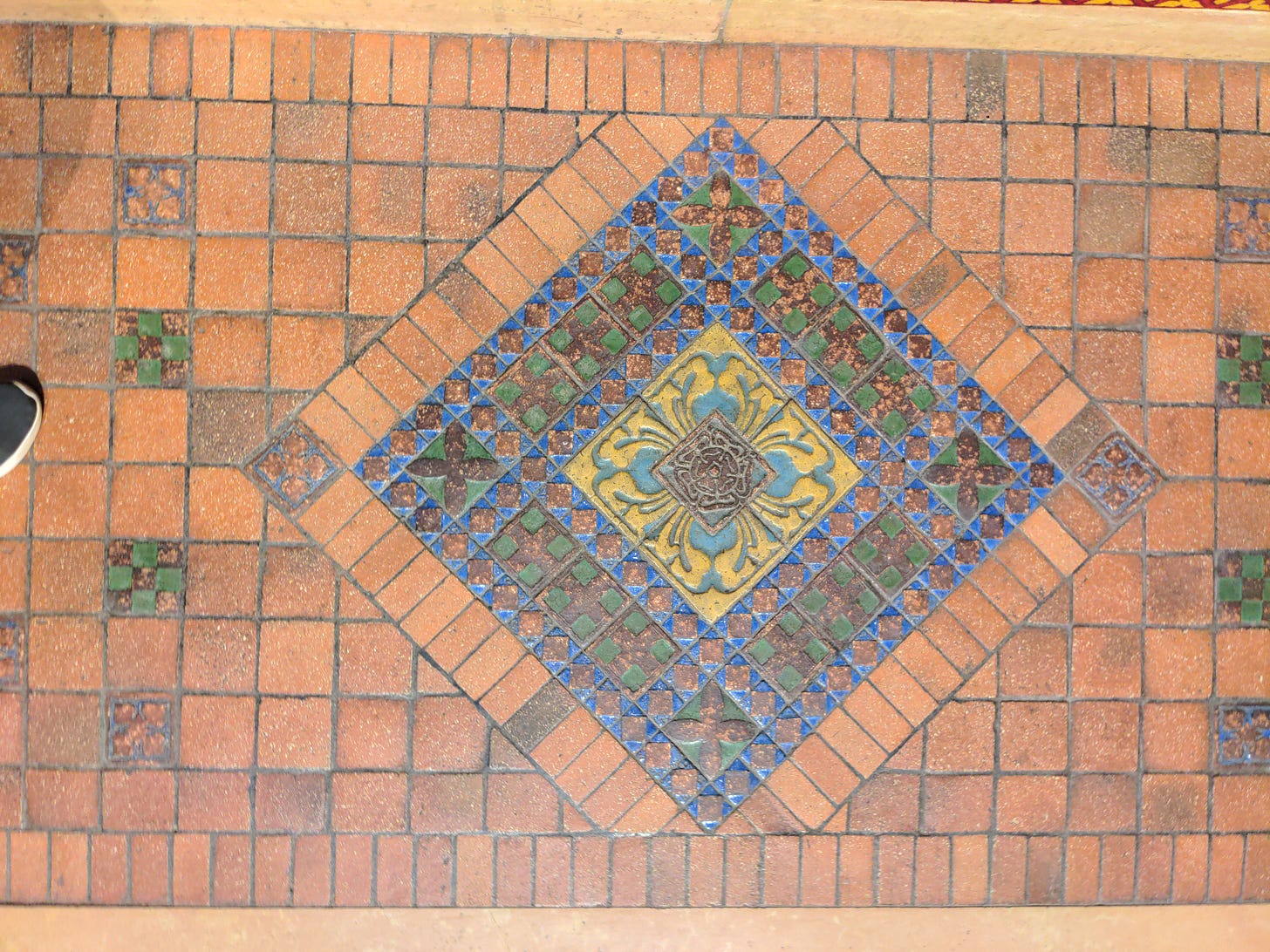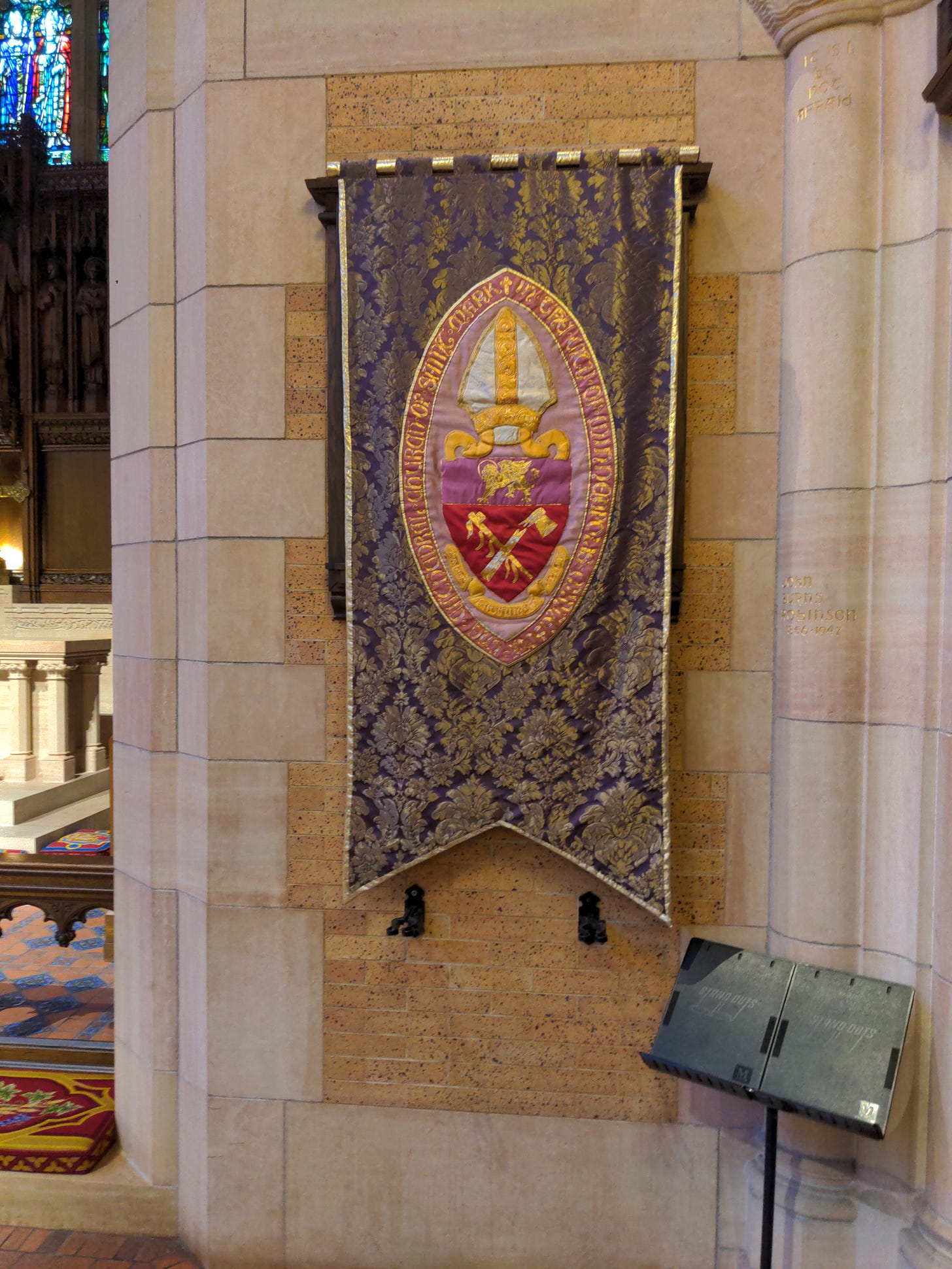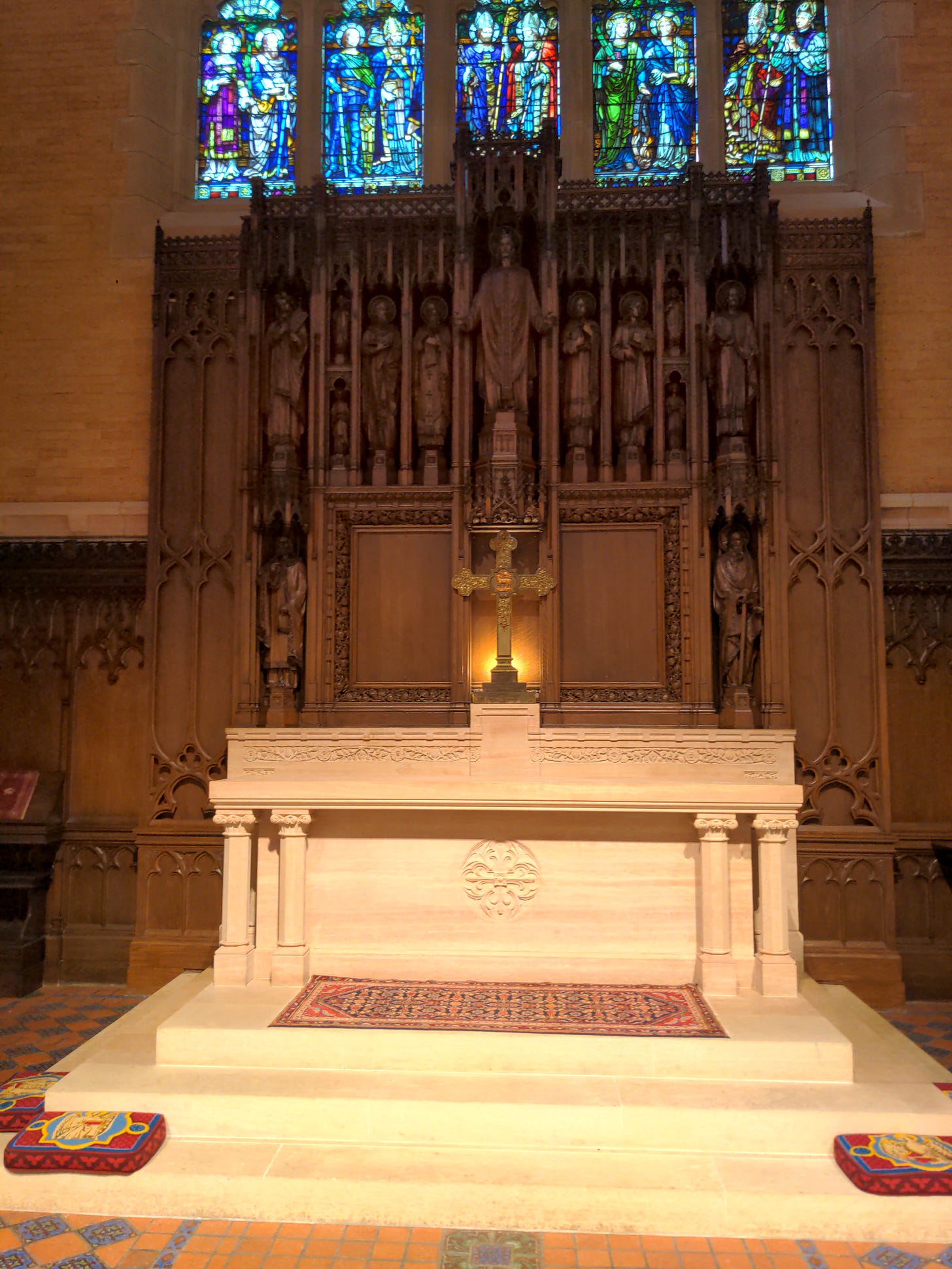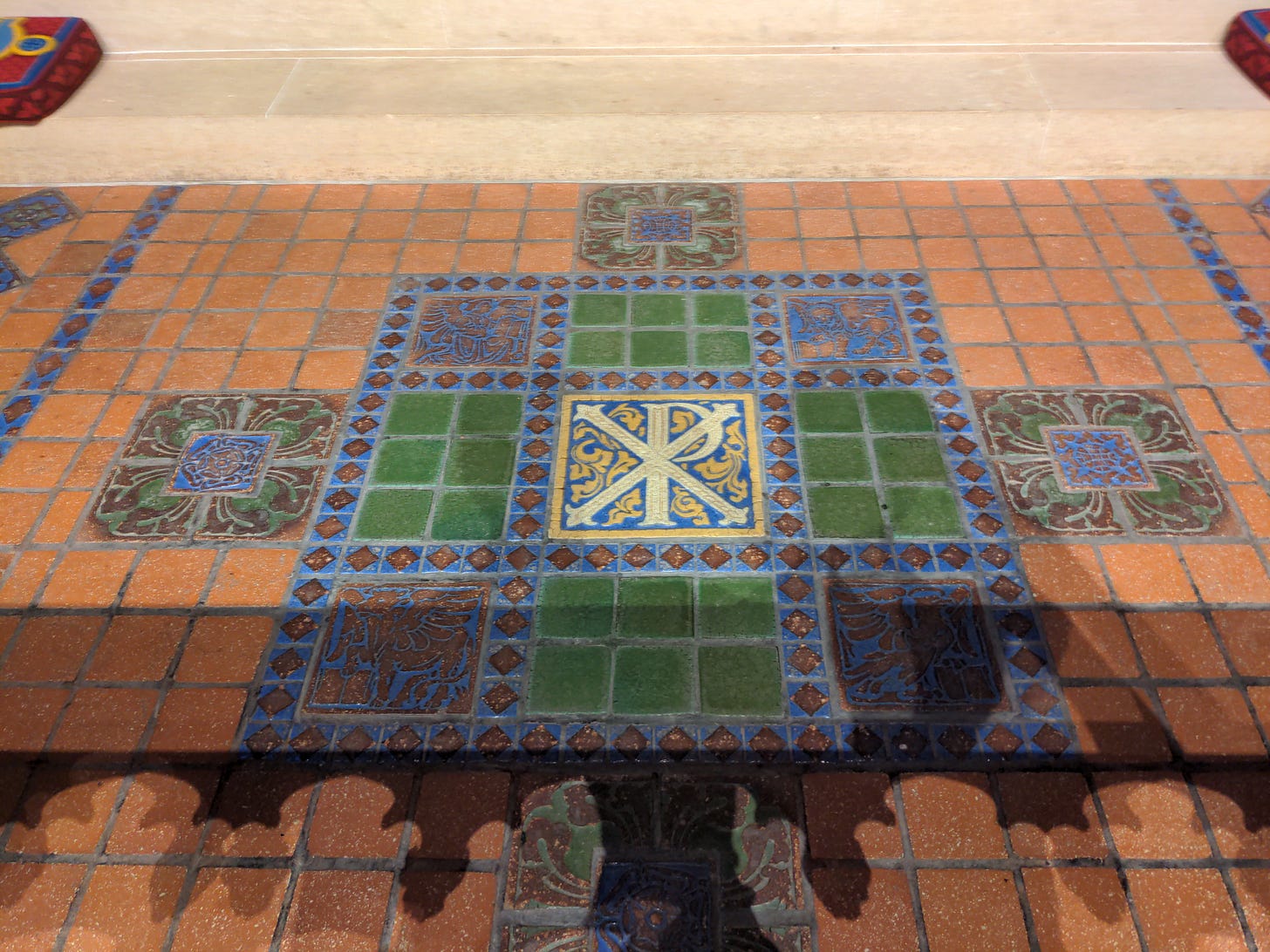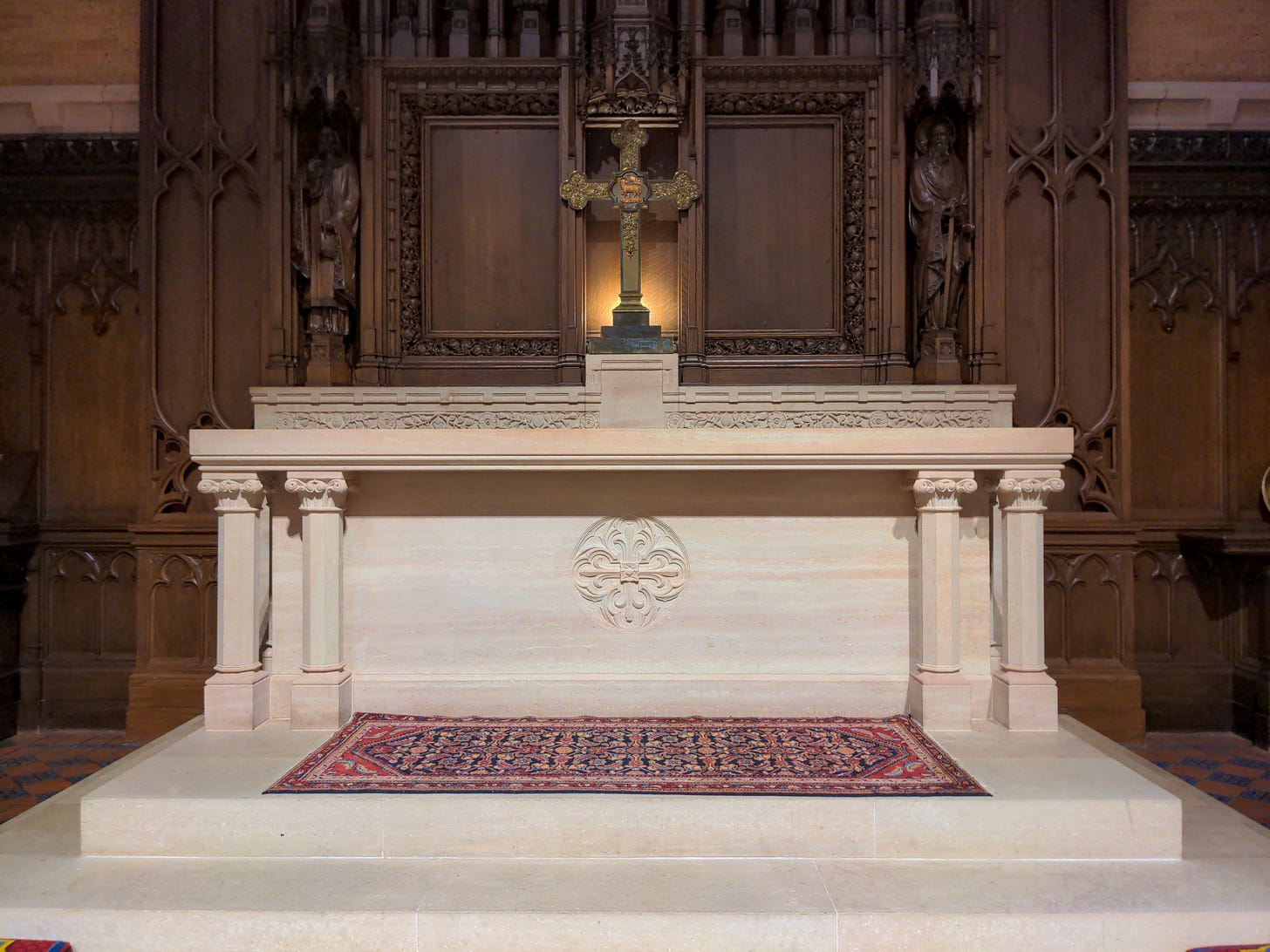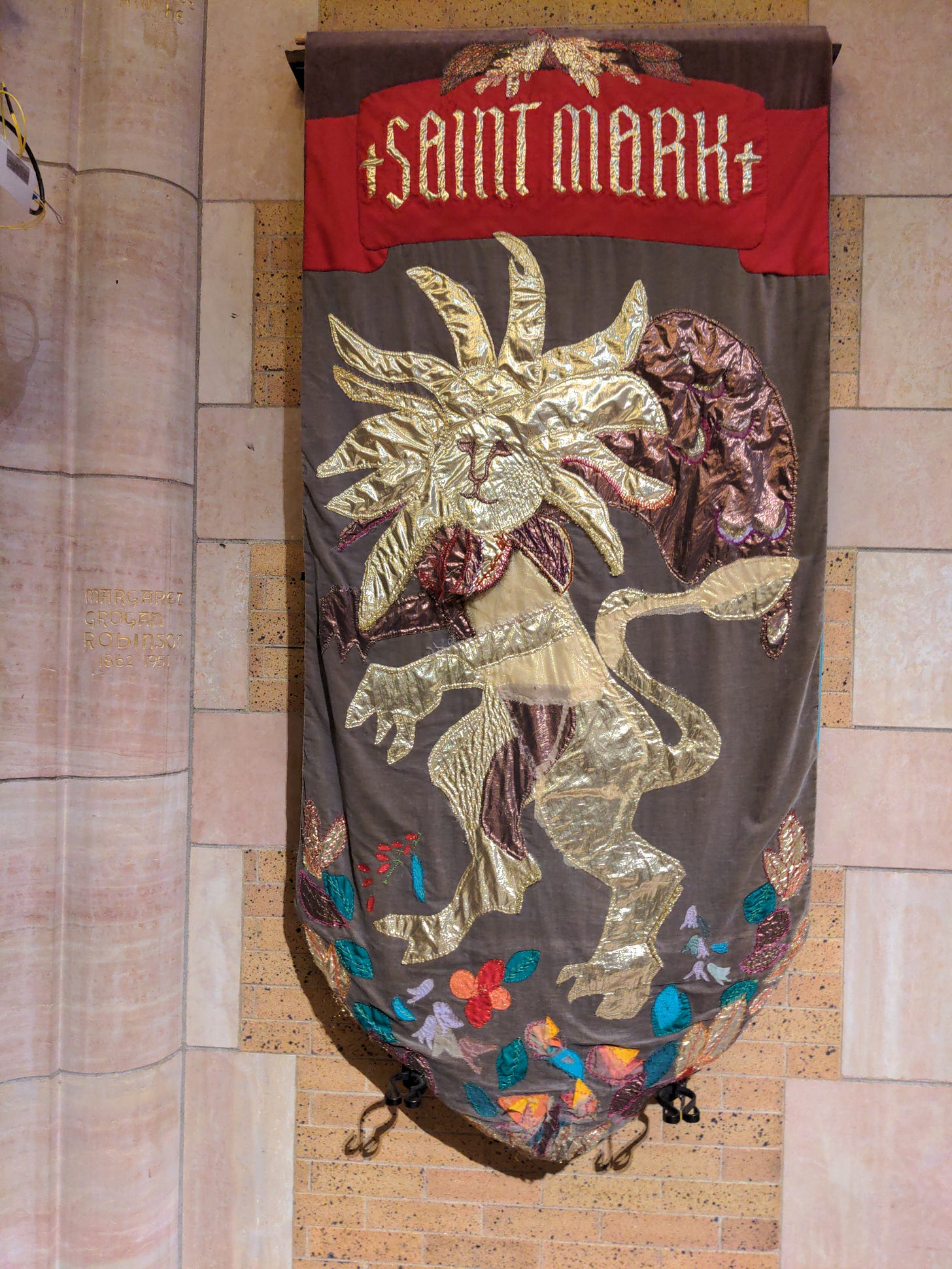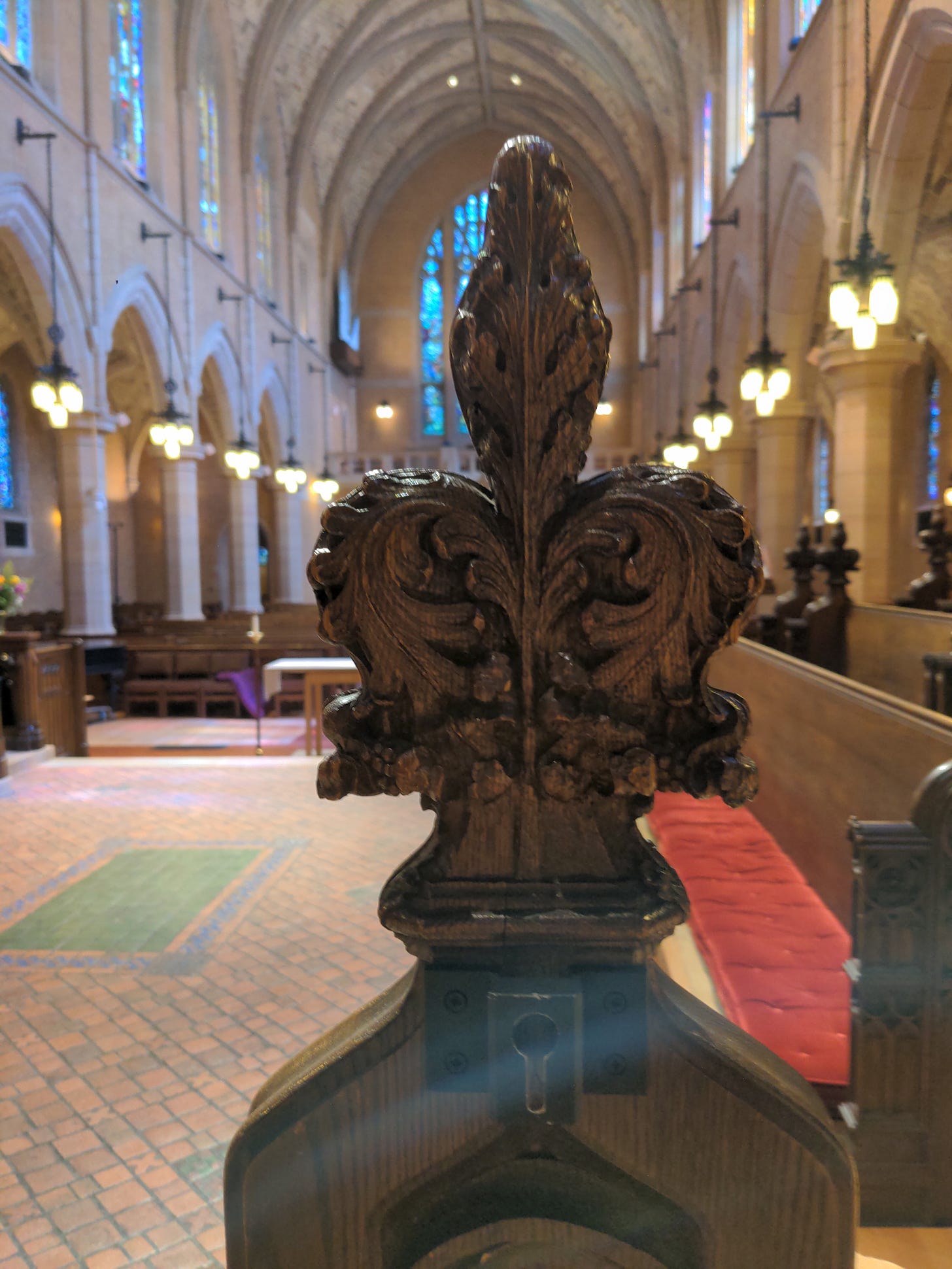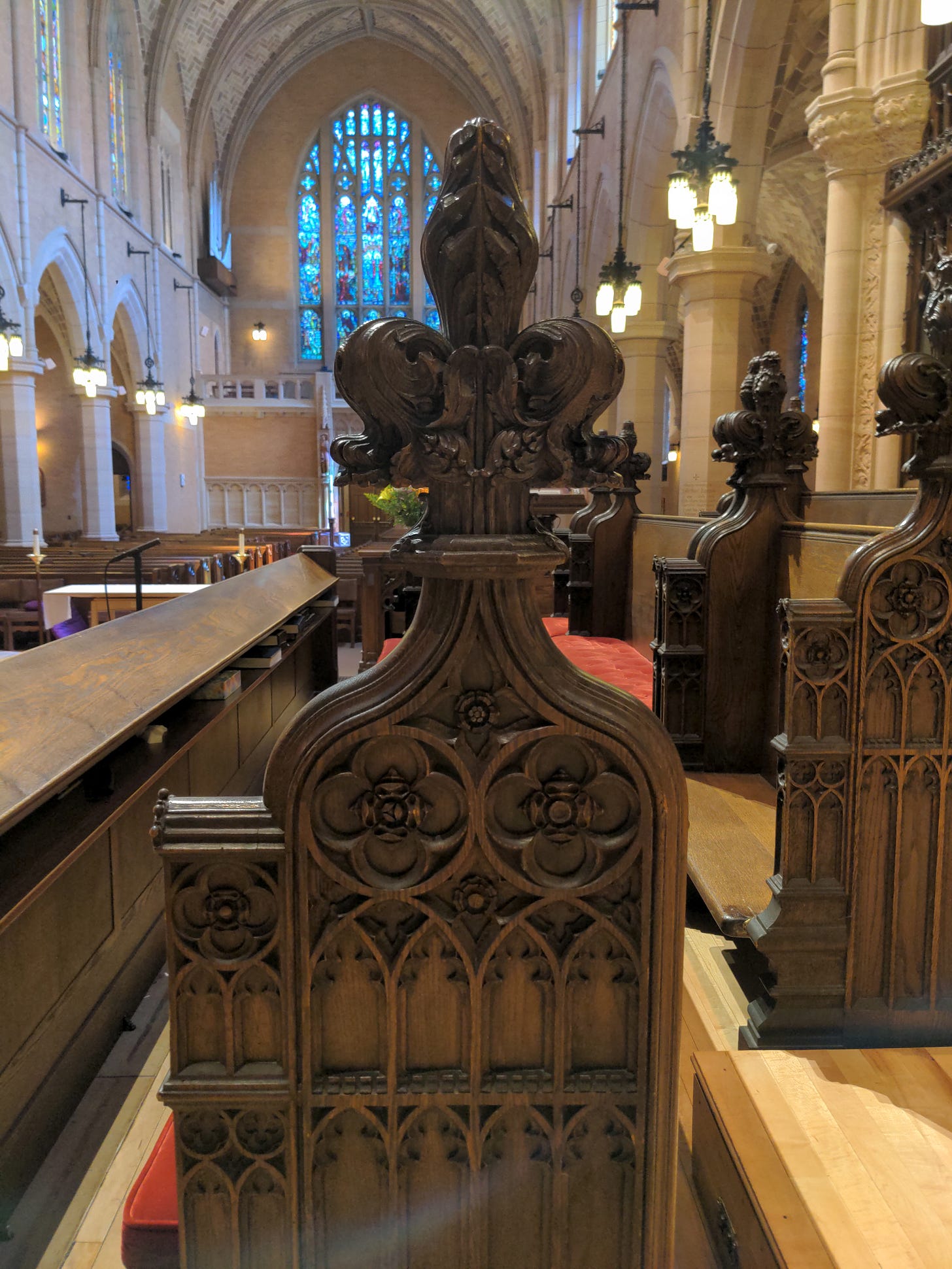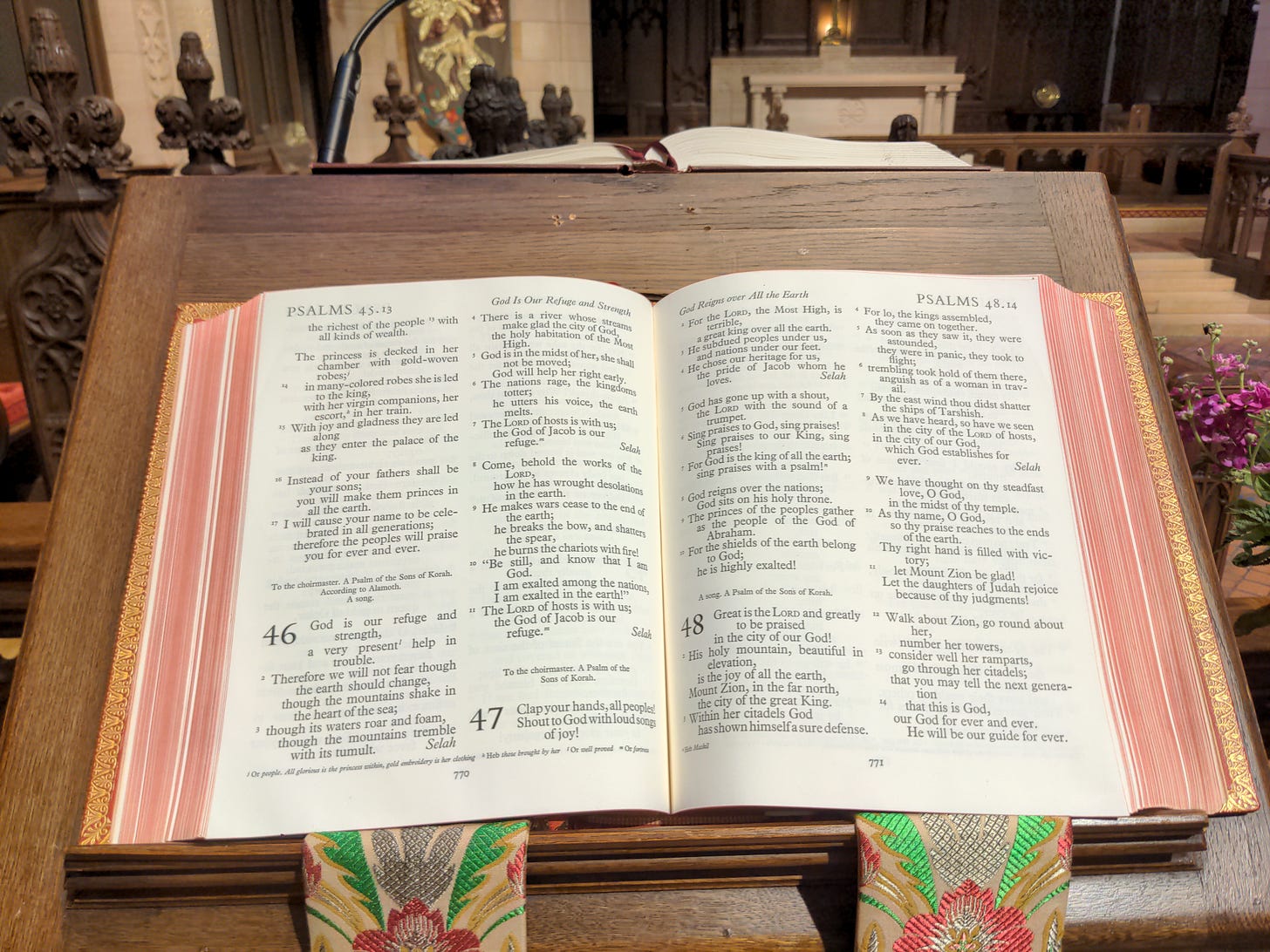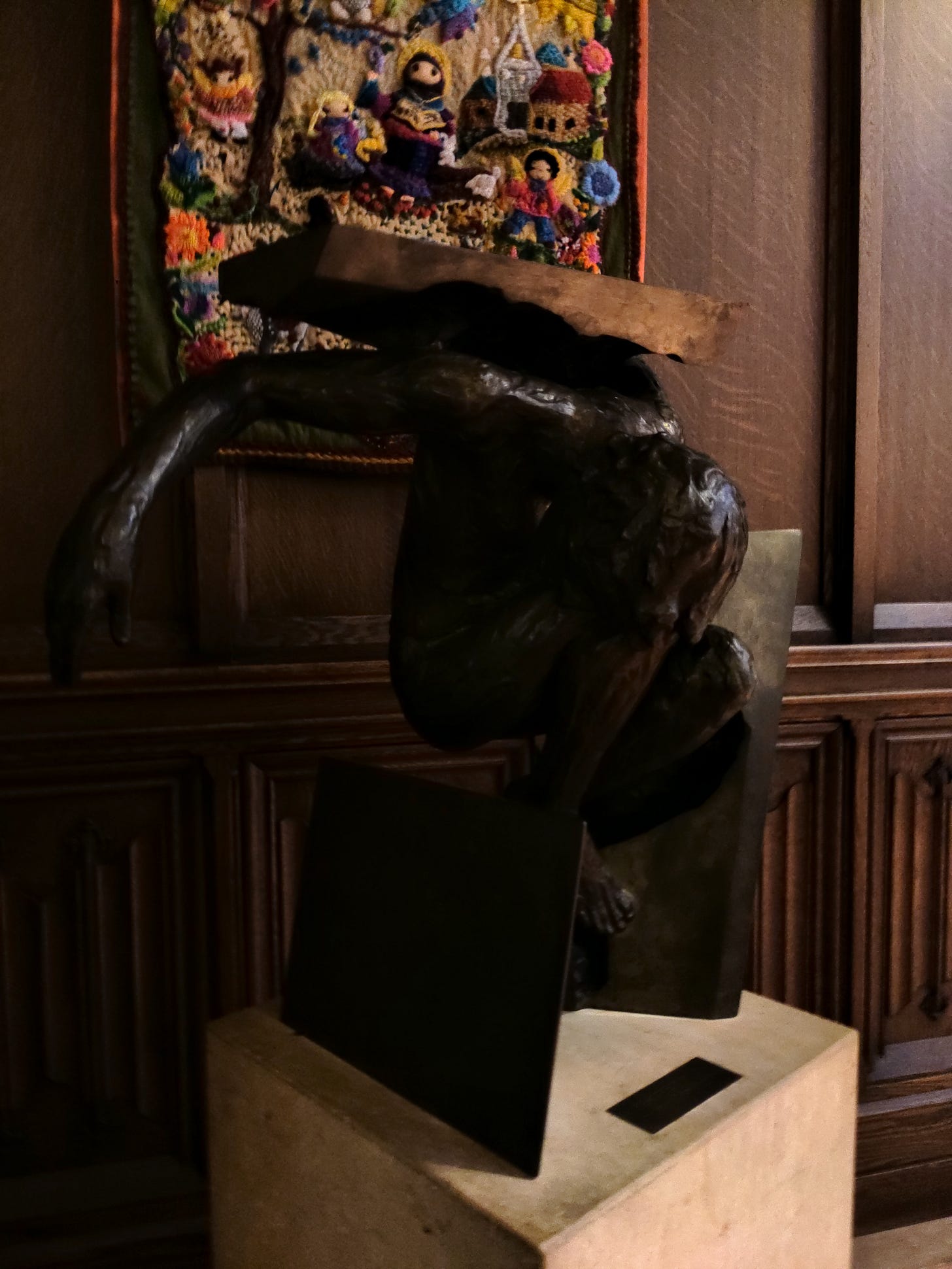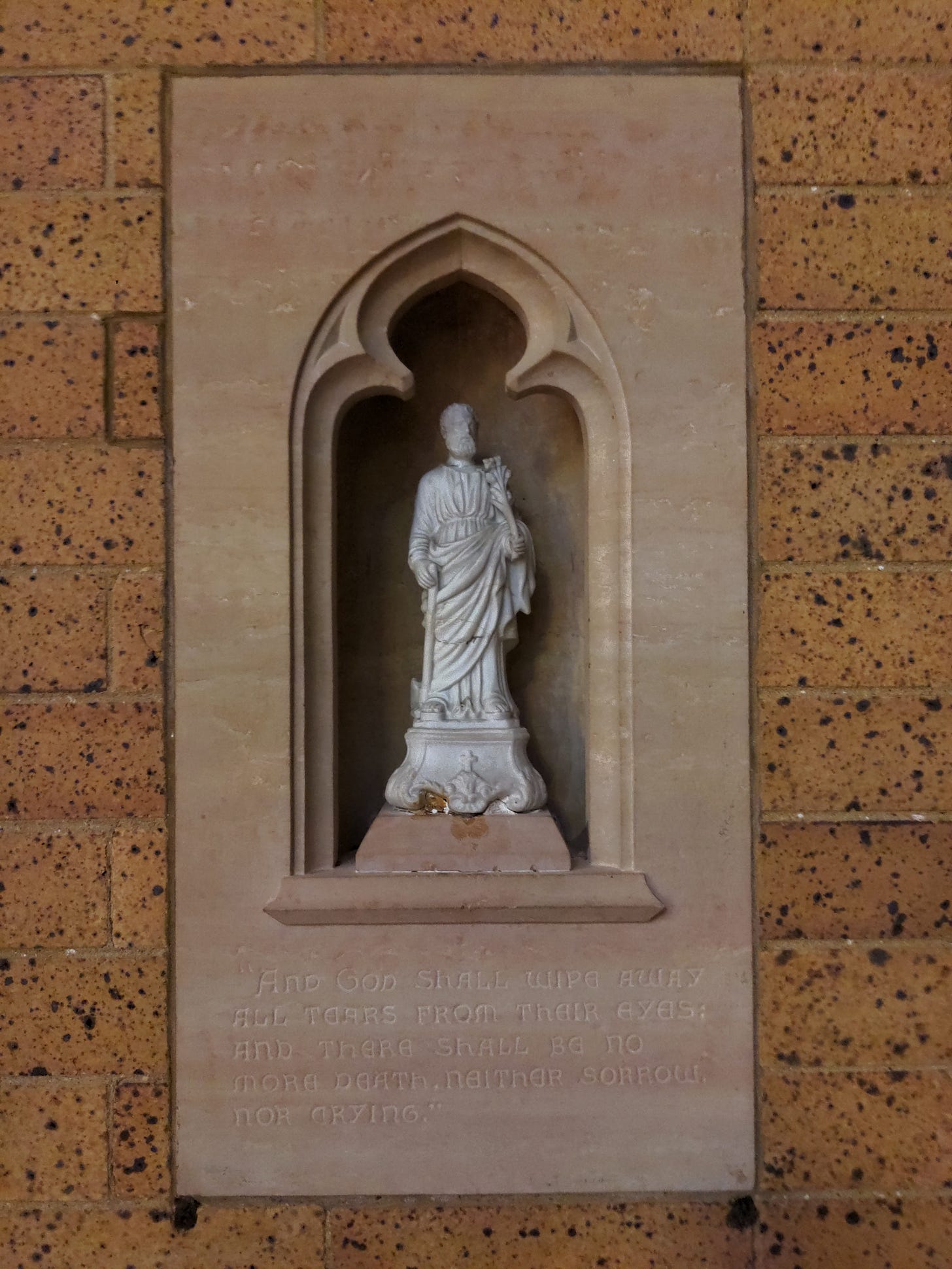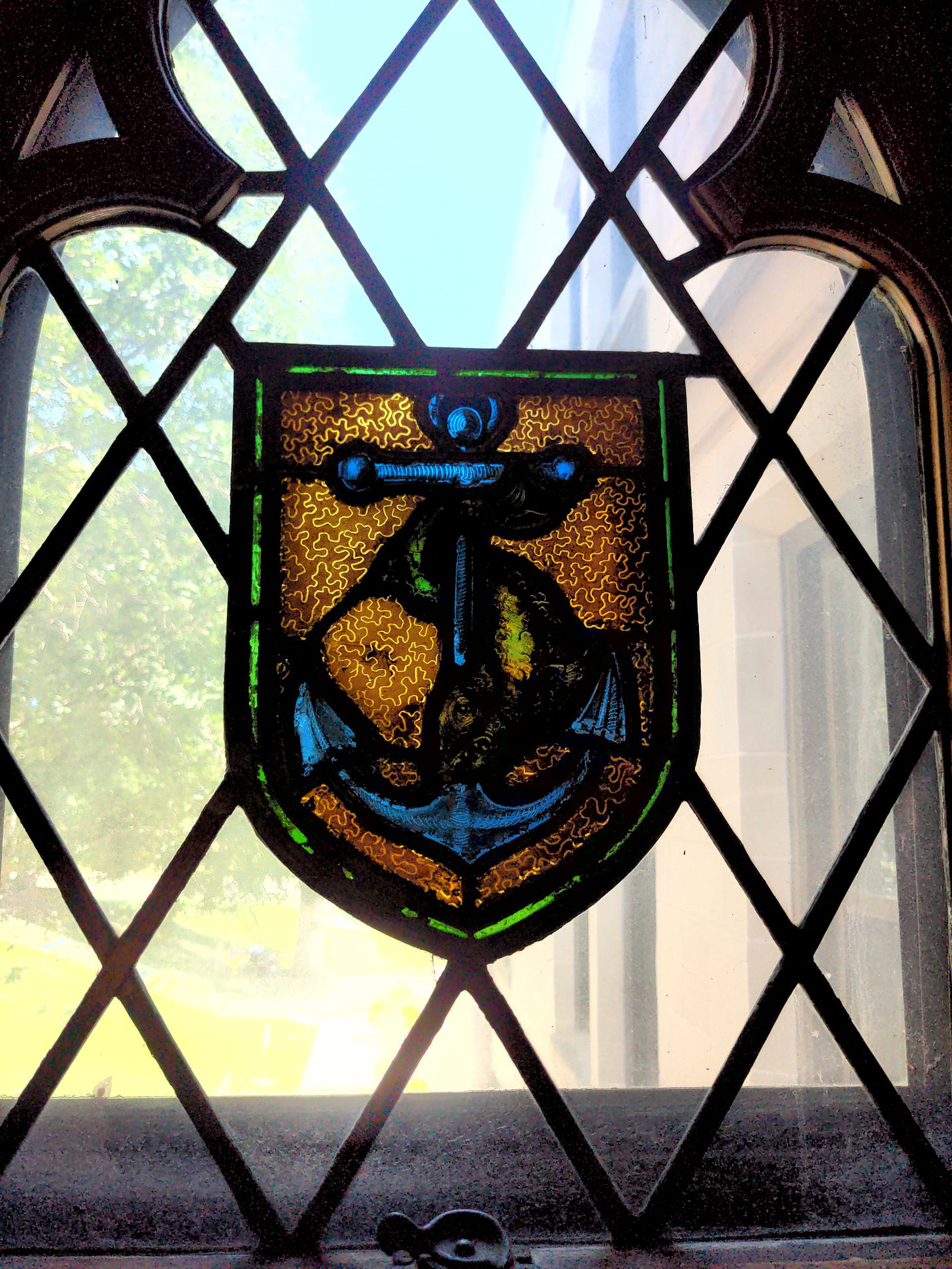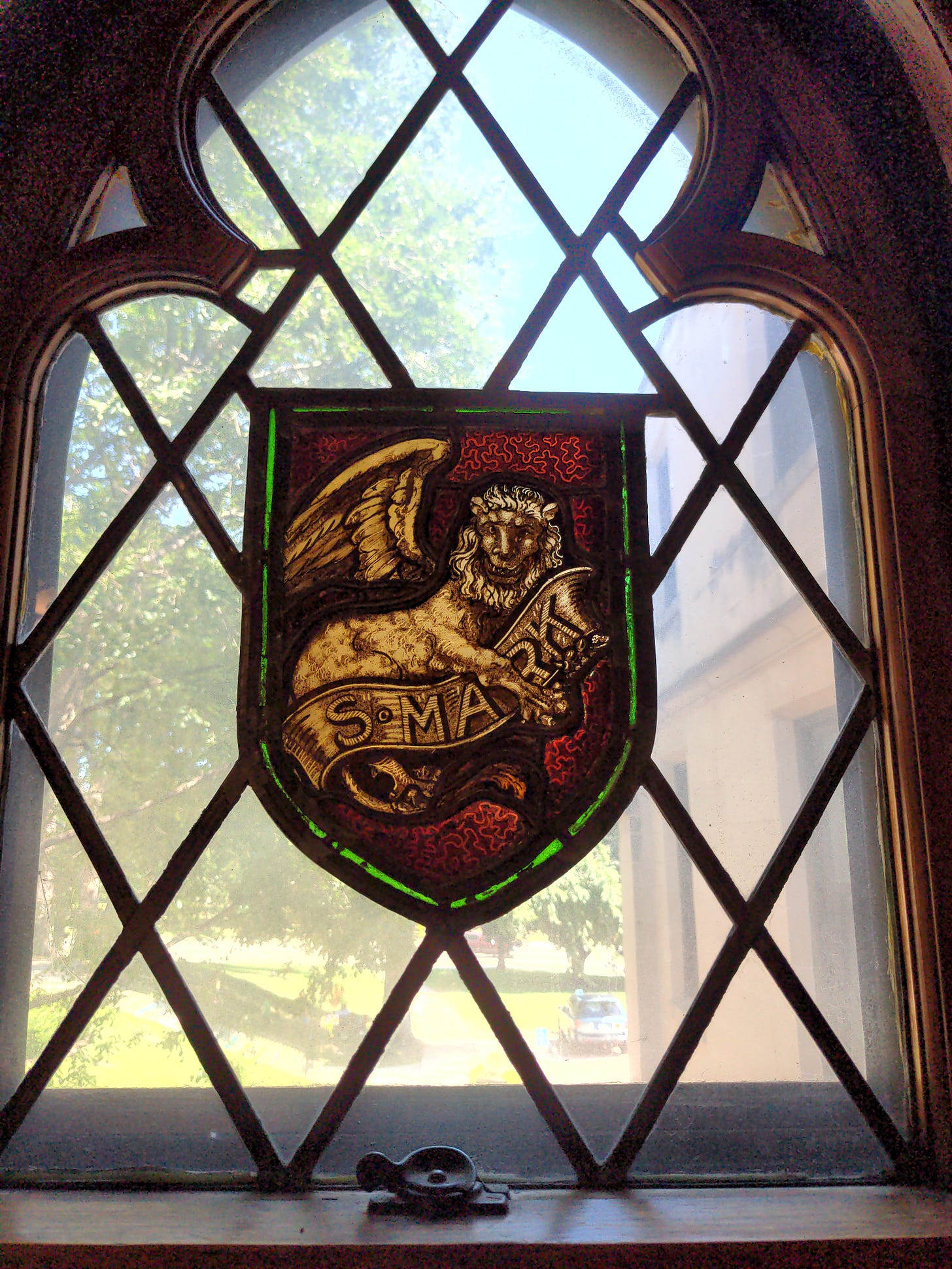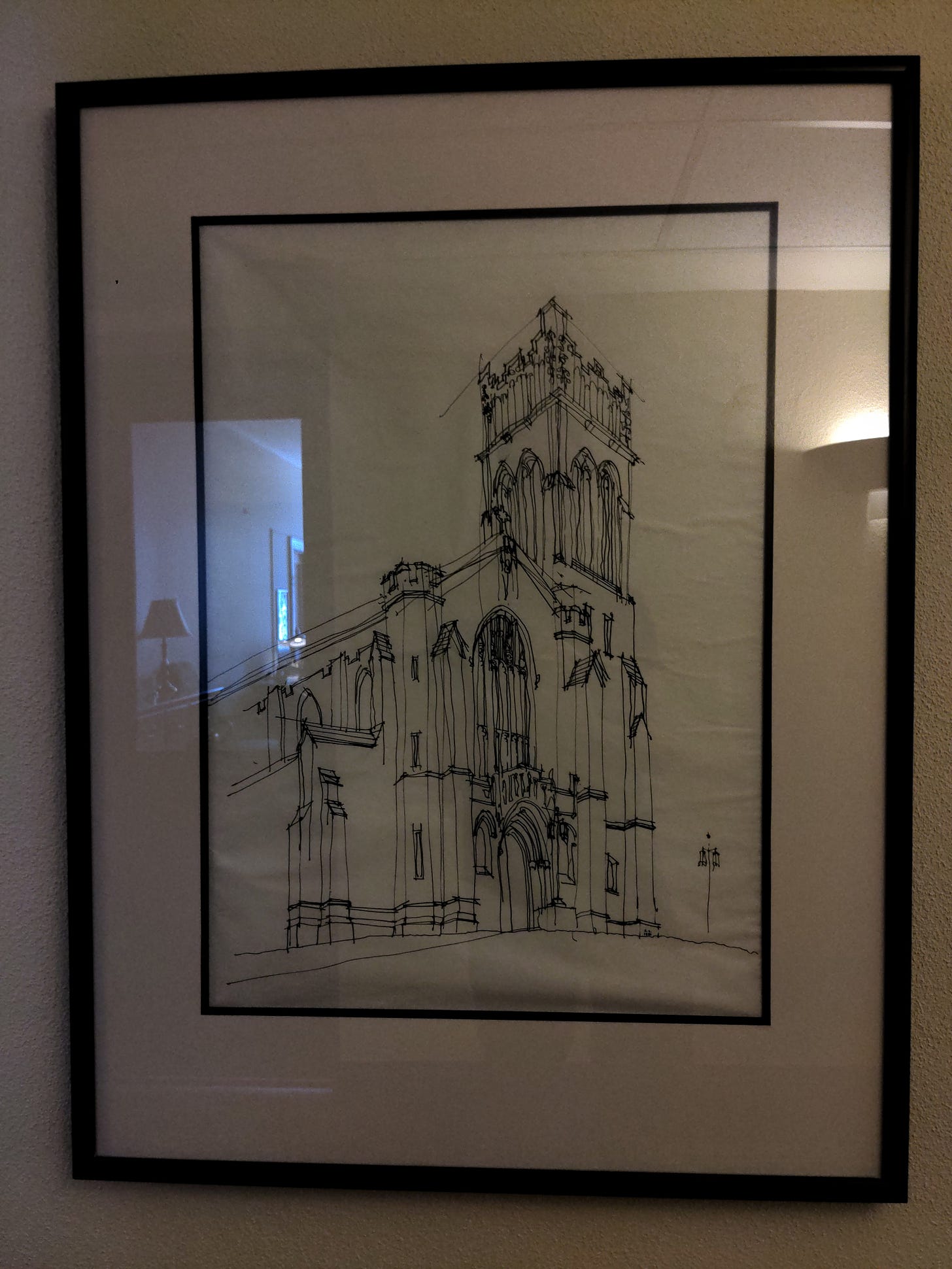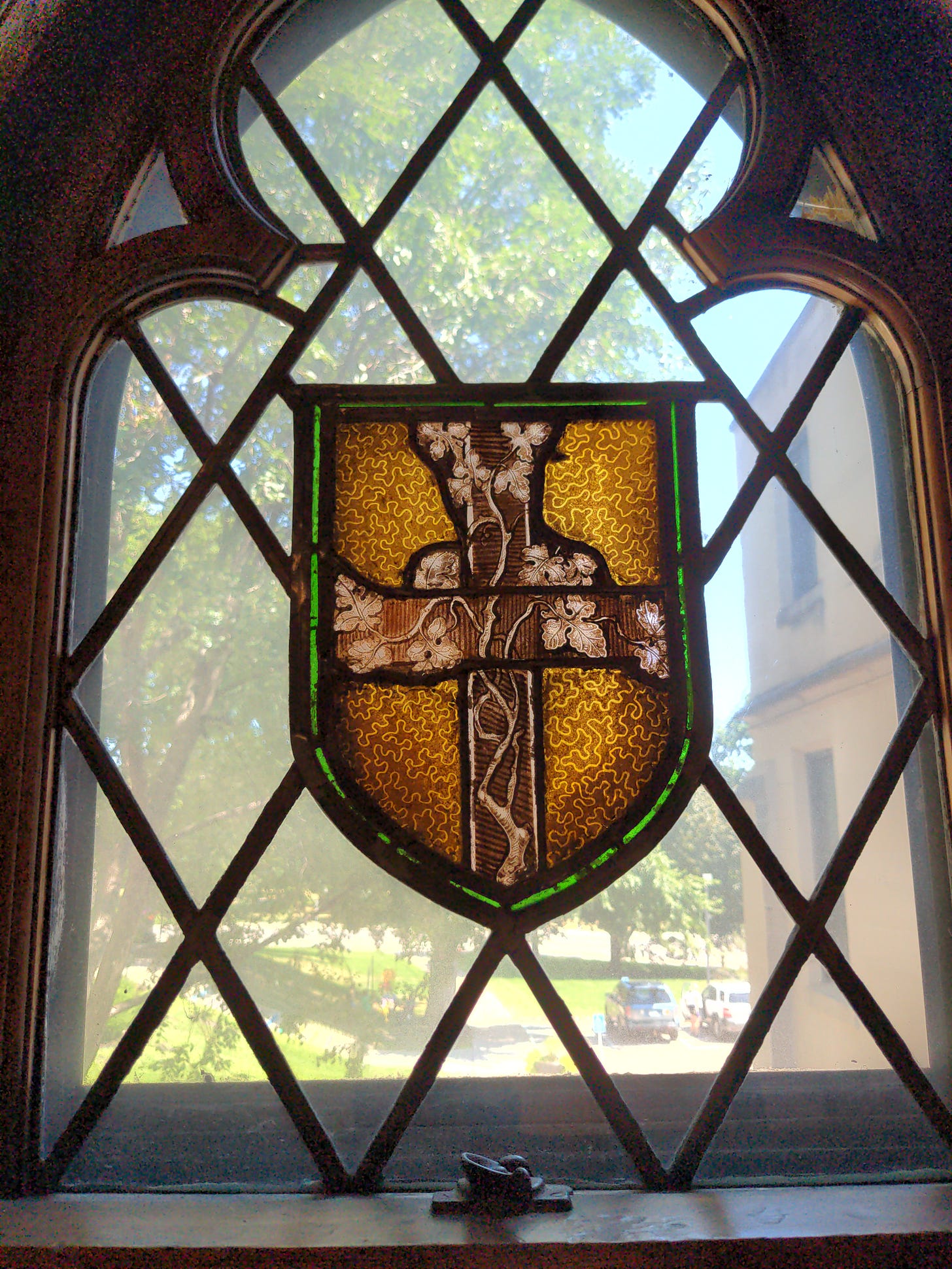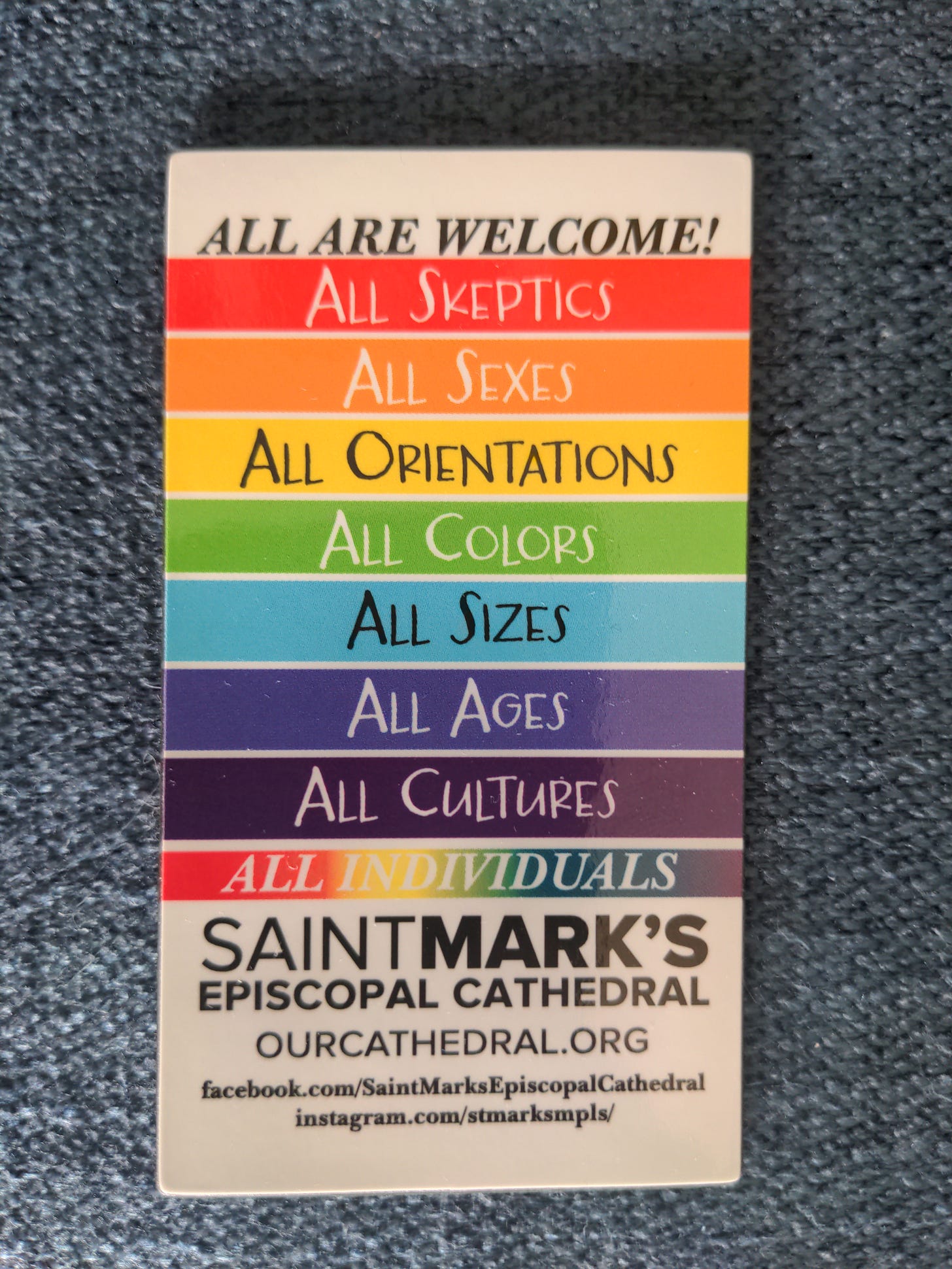This is part 3 of a multi-part series.
Still day one of my downtown tour, and my second stop is Saint Mark’s Cathedral:
Saint Mark’s is an Episcopal church built in 1910, and designated as a cathedral in 1941. It was personally very fitting for me that on my first day I would visit a Catholic and an Episcopalian church, as my father was a Catholic and my mother was an Episcopalian. Dad converted to Episcopalian when they got married, which is kind of ironic, as earlier in his life he nearly refused to go to his sister’s wedding because it was not held in a Catholic church.
One of the first things I noticed while approaching this church was the chalk coloring of the steps to commemorate pride month:
I found the identity politics to be laid on pretty thick at this church. This is something I’ve noticed at a lot of churches lately, particularly with older denominations such as Episcopalianism. I guess this is pretty understandable, given the history of Christianity, as well as the non-inclusiveness of other churches that are around today. It’s as if to say, “Oh no, we’re not one of those kinds of churches.” I get it. I certainly would not want to belong a church that excluded or treated anyone different based on race, gender, or sexual identity. It’s good to set this expectation right from the start.
And yet, I wonder how appropriate it is to make identity politics an integral part of worship and a church community. Personally, I would prefer to avoid any kind of divisive ideology within my church community. I understand that people are trying to bring Christianity up to date with the times. That resonates with me, because I am looking to do the same thing. Because so many things that made sense in the past just don’t work any more.
For example, we’ve got to shed this idea that Yahweh - the principal god of the Old Testament - was a loving, benevolent, omniscient, all-powerful god. He was none of these things. He was vengeful, unforgiving, barbaric, and totally callous towards human life. By his own words and many times over, he was a jealous god. I feel that if more Christians would actually read the Old Testament, they might begin to understand this.
Now, at our current level of human development, we have all kinds of tools that we haven’t had in the past that can help us sort these things out. Historiography, archaeology, literary criticism, and psychology, can all help put the Bible in a new light, allowing us to understand it better than any of our ancestors did. Paul Wallis and Mauro Biglino are two examples of people applying these new tools to the Old Testament, bringing new understanding to these texts.
So if Yahweh was such a jerk, and trust me, he was! I should write more about this, but for now I can recommend Mauro’s YouTube channel. Just put on the English subtitles if you don’t speak Italian. But if he was such a jerk, how does a Christian reconcile this? Well, the first step is easy. We must recognize that the god of the Old Testament is not the same god as the loving, forgiving god of the New Testament. Yahweh is not a god that I would ever worship, because I worship to cultivate love, forgiveness, and understanding, and Yahweh does not represent these things.
Anyway, bringing Christianity up to date with the times is a massive topic, and I’m sure we’ll get a chance to talk more about it, but let’s get back to Saint Mark’s. I was greeted by a kind and polite man with a well-trimmed beard at the front desk. I told him I was there to pray a bit and look around, and he happily led me up to the sanctuary. He pointed out some of his favorite pieces of art there, and told me a bit about Saint Mark, whose symbol is the winged lion, before he left me to my own devices.
Saint Mark’s Cathedral is a really beautiful church, and worth a visit. It does not have the same level of grandeur as some of the other churches in the area, or, say, the Episcopalian Trinity Church of Boston, where I went to church as a child. Episcopalianism, originating in Britain, seems to be a much bigger thing in New England than it is out here in the midwest. Lutheranism is extremely popular here in Minnesota, as is Methodism, which, while originating in England, has strong Calvinist influences.
Anyway, on with the pictures!
The following sculpture is called Christ, Peter and Paul, by Paul Granlund. I think I will dedicate a separate post to this sculptor, as I encountered his work at many different churches downtown.
The fine detail of the wood carving is something I remember clearly from Trinity Church Boston. It is as if every tiny space in the church must be made beautiful, every little nook.
My host pointed out this following statue, Resurrection II by Paul Granlund, as one of his favorites. I did a poor job getting the lighting right here, it’s really hard to see. Like I mentioned, I will return to Paul Granlund in a later post.
Part 4 of this blog post series documenting my “cathedral tour” is here:

